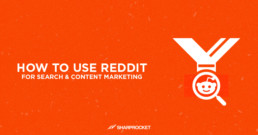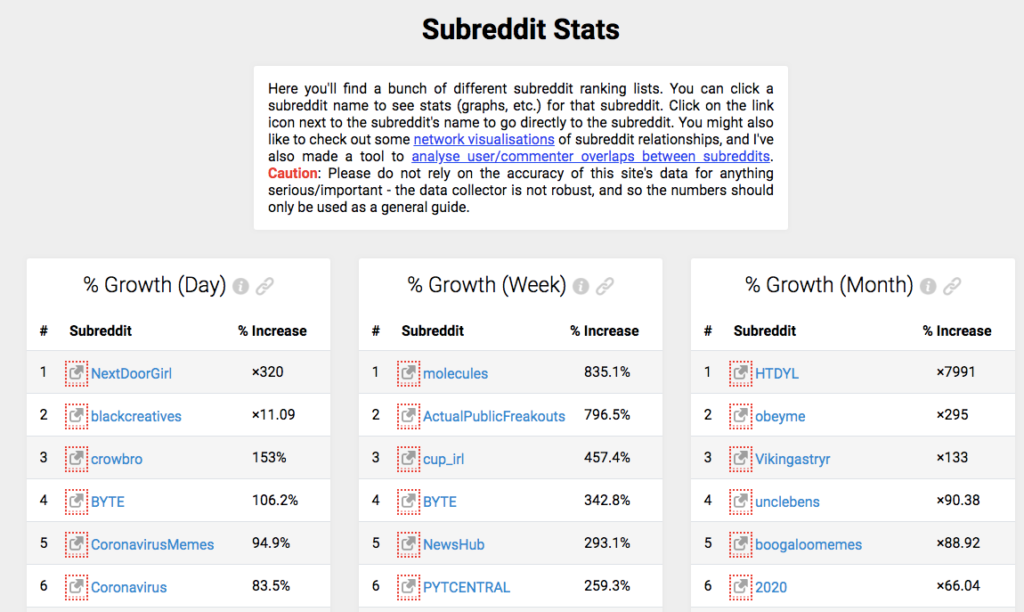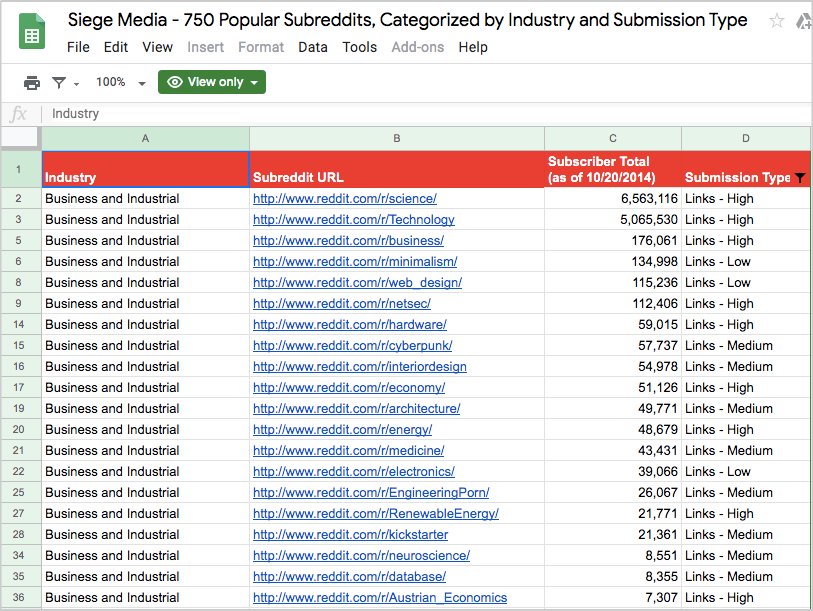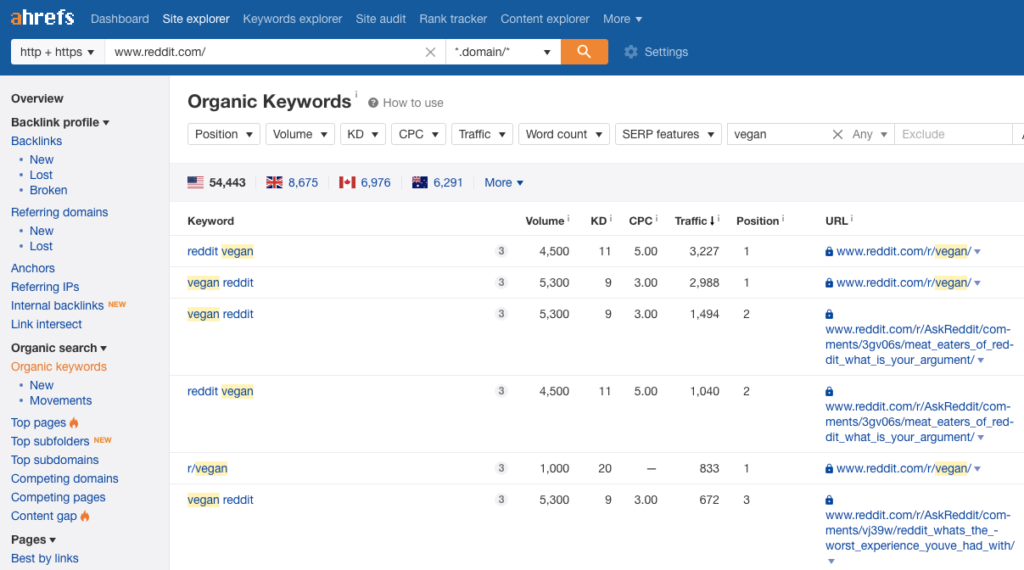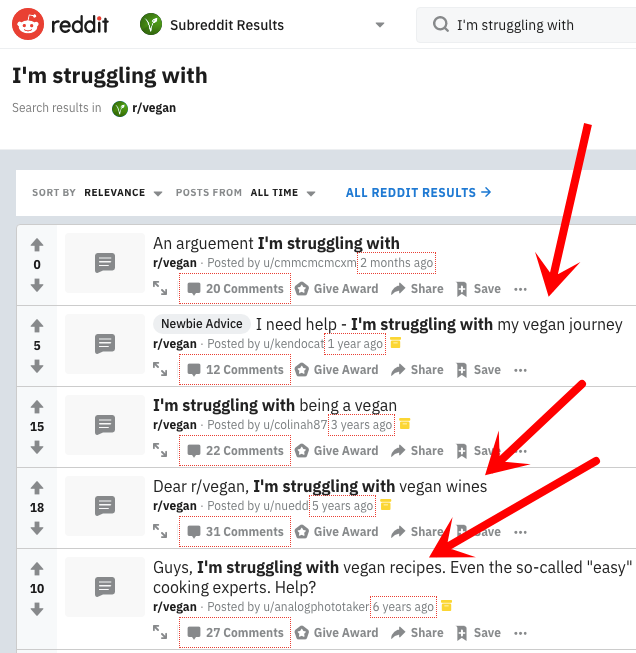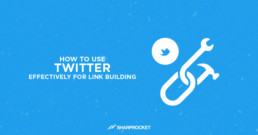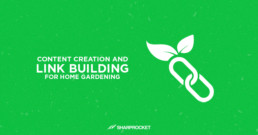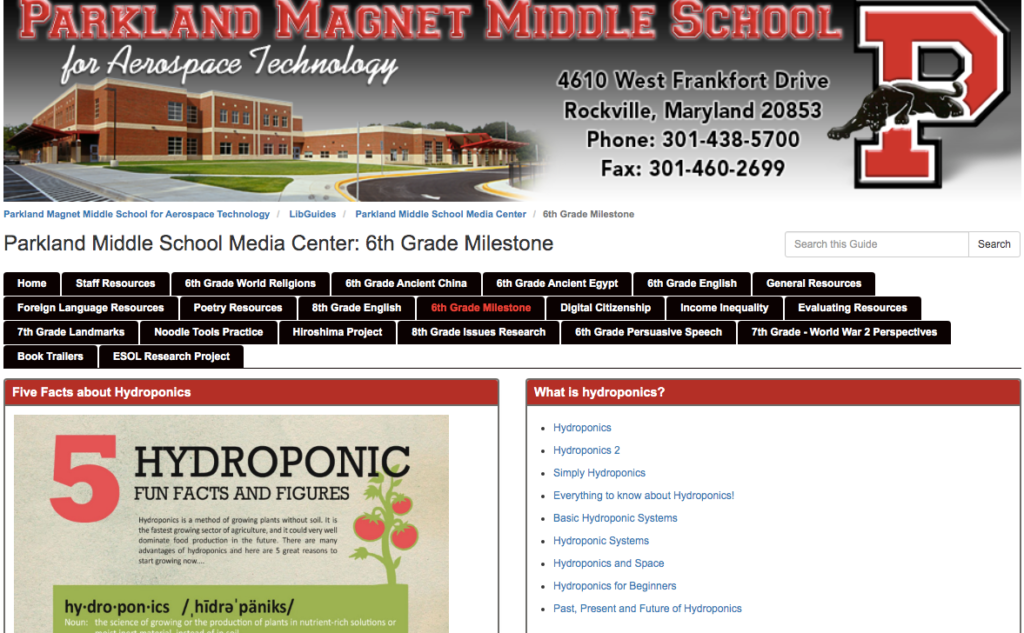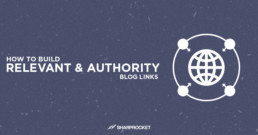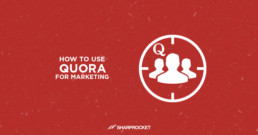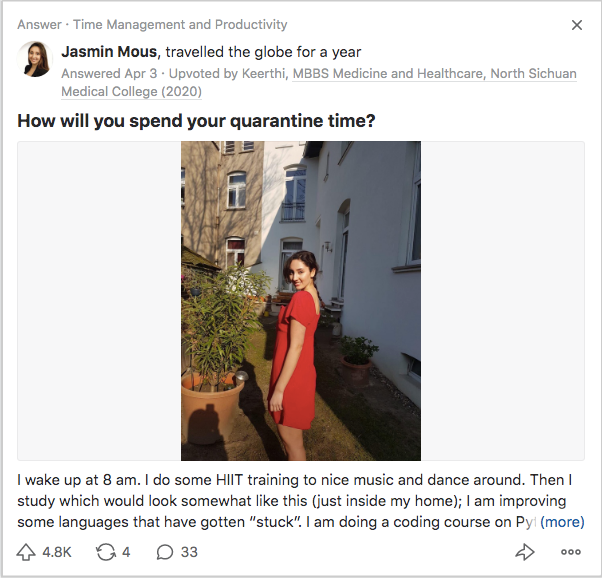Four Factors That Help a Content Gain Organic Links
While link building is a conscious effort-driven activity to pursue the right types of links, any properly executed content strategy will result in organic links. They call this "link earning" whereby links acquired are by-products of the receptivity of the linkable audiences to your content assets.
The question we need to answer is, "What makes a certain piece of content organically acquire the links?"
There are two important factors that can help us answer the question: context and timing
When the context is appropriate to fulfill the needs of its intended audience and is better perceived as link-worthy than its competing resources, there's a likelihood of an organic link building process coming into play.
When the timing is just as right such that the content is needed by its targeted users, whether they're looking for it and are spotted right in front of their eyes, the same organic linking is possible.
Here are the factors that make a content piece likely to gain organic links in the process:
1. Content is referential
This basically means that there is an intent of using the type of content as an additional resource or reference in the creators' work.
Link referential activity happens when posts are researched by writers using search engines or by following the hosting blog (given its authority and established brand) and using them to source more information from the texts or to point out readers for additional learning.
A survey is a type of content that is referential in nature. If it's well-researched and has accurate findings, it could gain organic links from bloggers who're looking to support their opinions, statements, and thoughts (and would add help in increasing their content's credibility to the market).
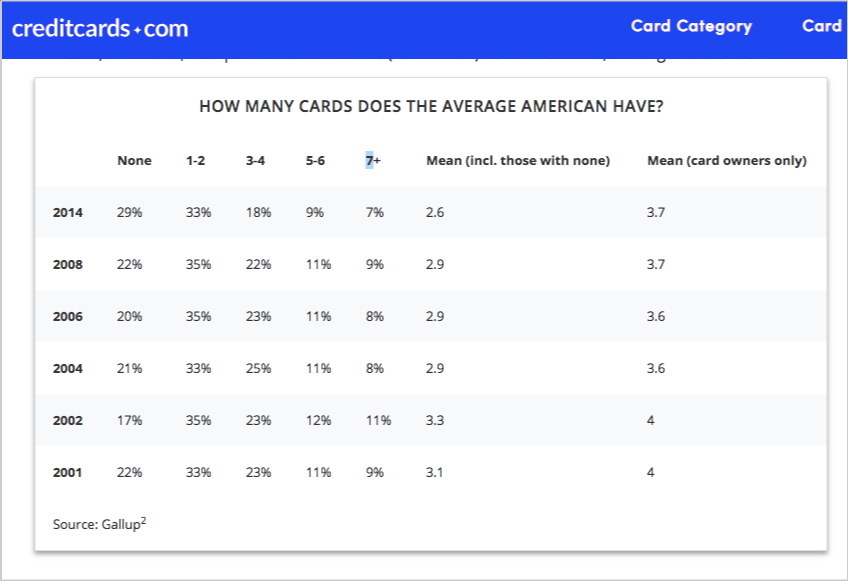
If you're pursuing .edu links, for example, one way to catch interest from student blogs is to choose topics that have high potentials of getting referenced by the page/site of students and faculties and get them published on your blog.
You can interview professors on the topic of school interests, collect their input, and produce it as a content asset.
2. Content is searchable
To enhance organic linking, a content piece must be well-optimized to rank in search results for its targeted keywords. If it is found in SERPs by people in the content creation process - researchers, bloggers, and other content publishers, you can really scale the link attraction process.

Not only that, but you should also produce evergreen content on your blog, but make sure this content is well-researched to dominate the top spot of search results.
The searchability of your content allows non-industry publishers to quote or cite you in their own published works, which would expand the reach of your assets. This is a tangential approach to producing more links to non-targeted markets yet is highly relevant to your brand.
3. Content is shareable
If a content piece gets more social shares than other average pages are capable of getting, it can multiply its effect in introducing your web asset to a new set of potential readers who might use your page as a reference in their future publishing works.
If the social shareability of your content continues for weeks (may not be extended to a year and rarely does it happen, unless readers found it and intently share it again in social networks), you are increasing the likelihood of boosting a good number of links in its initial promotion.
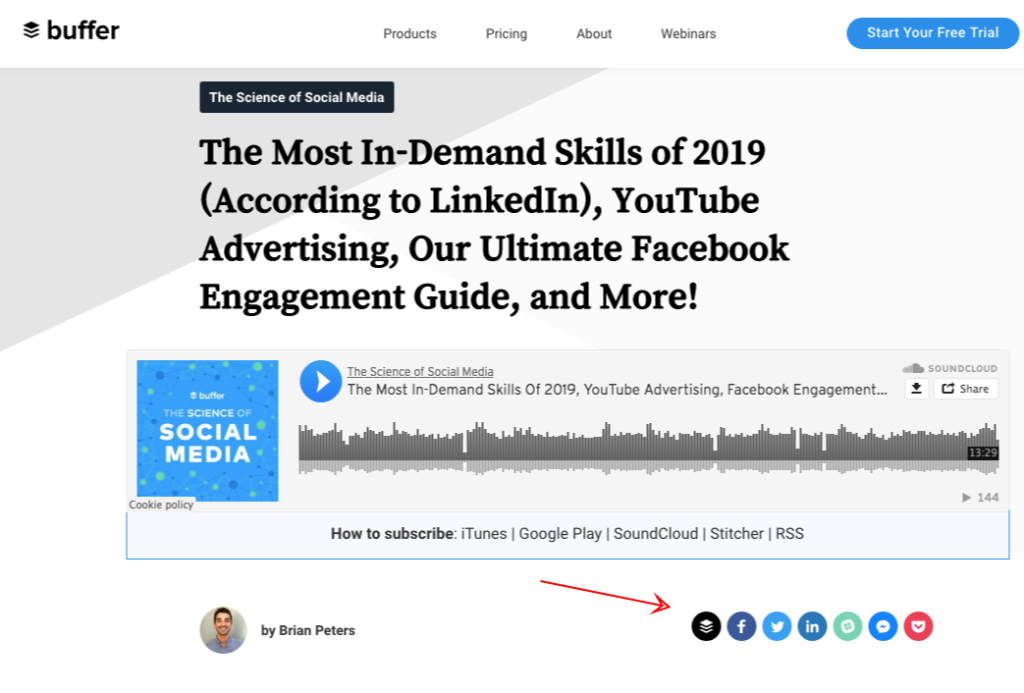
It is essential to make it easy for your readers to share and even follow you on social networks. Those social sharing buttons will form a great role as a call-to-action on your posts.
Another approach to scaling the process is for your own party to share others' relevant content, especially those pages coming from individuals and entities who have substantial followers in their industry.
The value of building alliances and reciprocity will go a long way in making your content more shareable with the masses.
4. Brand hosting the content is trust-worthy
Aside from the content itself is appealing in design and its included visuals, another signal that will be of importance for organic linking is the exact website where the page is hosted.
Whether it is a sales-oriented page or a page for linkable purposes, who sources the content is a great determining factor in whether a piece is likely to be referenced by publishers.
The initial confidence brought by the authority of the entity/brand is so crucial that it speaks the reason behind the number of organic brand mentions in products of many brands online.

Because customers got great experiences using the product or service, it's a natural thing to quote it on their own blogs, forums, or micro-communities. This kind of organic linking activity isn't something any brand can replicate because the brand is well-known for its greatness in customer service.
THE UNCONTROLLABLE AND INVISIBLE PART OF LINK ACQUISITION
The type of content and relationships between linking partners may not be publically present, but they form part of what makes organic linking more like an auto-pilot.
If a content piece is referential, searchable, shareable, and is hosted by a trustworthy brand, the art of organic linking becomes more realistic in the scene.
The process involved in it may require conscious effort in consistently putting out content that is well-curated or well-written. The rewards from the process is astounding, a content publisher will repeat it regularly.
How to Use Reddit For Search and Content Marketing
With 330 million monthly active users (source), Reddit is a great place for traffic generation, additional content visibility, and content ideation.
By taking every initiative seriously, you'll get the maximum benefits from diving into how Reddit marketing works.
You would tap an incredible amount of feedback from users who are eager for new content in their specific industries and have the potential to distribute a content piece worth sharing.
How to Find Subreddits For Your Content
Your success in Reddit content distribution is based on your own identification of subreddits that fit your brand.
I mean your brand, not your industry. Going generically with your industry for Reddit marketing won't make it a huge success. Start identifying a demographic fit for the content you are producing.
The question is, how do you find subreddits for your content?
Reddit search
Reddit has good search functionality based on the keywords you input. Start with that.
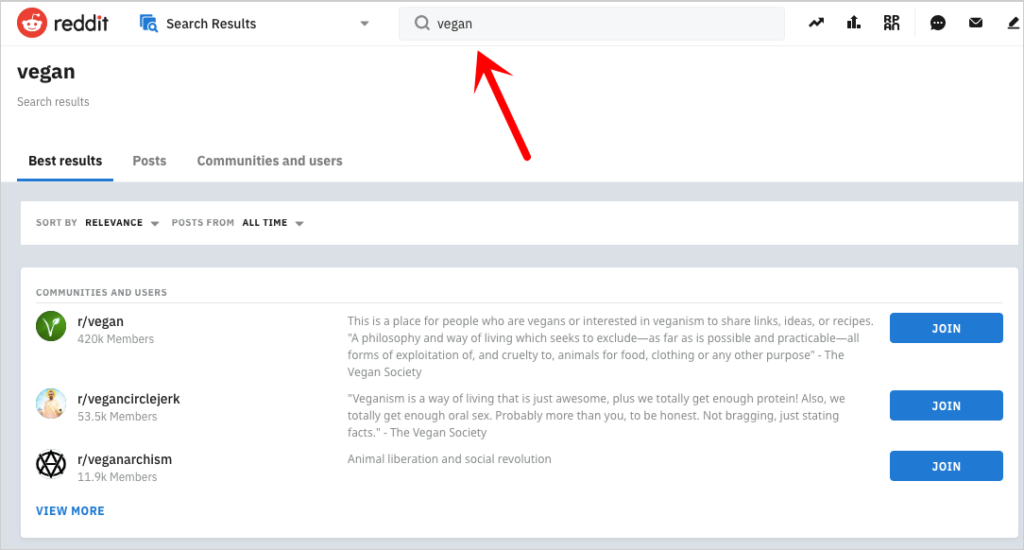
It is best you can create a spreadsheet that lists down all possible subreddits you can check later on.
Google Reddit search
Besides Reddit search, discover deeply relevant subreddits on Google search itself.
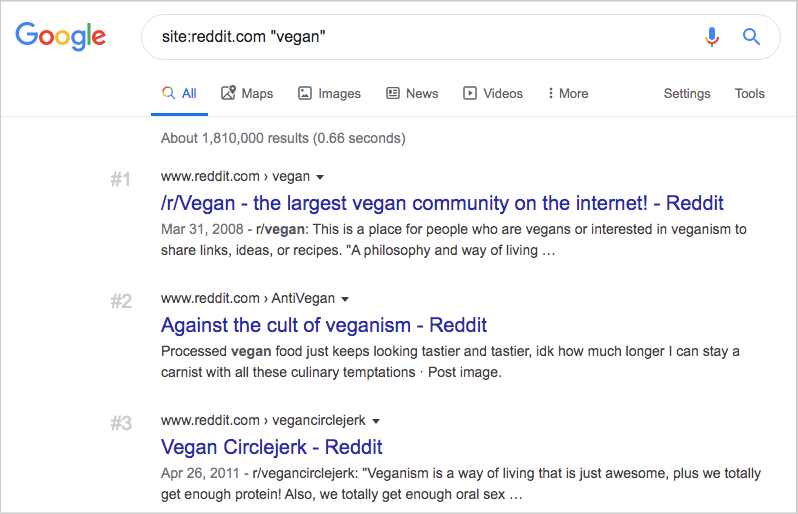
You will see subreddits that you wouldn't find in a Reddit search. Google will take subreddits where topical content has been submitted to, or has received good engagements — not always the case, but use this search methodology to add more subreddits to your list.
When you go to subreddits, you will also see related subreddits — which you can include to your list, as it fits.
Brainstorming with your team
Set up a meeting with your content team and try to tackle what topics you prefer to publish on your content.
Match those topics to available subreddits you discover.
Of course, the broader you get into your brand content strategy (in terms of content ideation), the more subreddits you can list down further.
Use Reddit websites to assess growing subreddits
There are new subreddits flying and growing an activity count.
You can use Subreddit Stats and Reddit Metrics to check any growing subreddits you think can be added to your Reddit spreadsheet.
Discover more with SiegeMedia's list
SiegeMedia curated popular subreddits by industry. You can check out their list to find ones fitting to your brand.
Reverse engineer with Ahrefs' organic keywords
At most, if you want to look for any subreddits, even specific Reddit discussion threads that are currently ranking for keywords related to your site, you can use Ahrefs Site Explorer.
Simply plug in reddit.com to Ahrefs, then go to the Organic Keywords section to find what keywords any Reddit page is currently ranking.
You can discover topical subreddits by searching for your industry keywords in Ahrefs search bar.
What to consider in subreddits?
Before we dive into specific Reddit marketing tactics, let me go over a few considerations you need to take in every content promotion or content marketing initiative.
Submission policies
Go over your list of subreddits and check each subreddit.
Look for sections about submission policies. There are subreddits that have a dedicated portion for that — letting existing and potential subscribers of what they should expect with some rules and guidelines for sub-communities.
There are subreddits with restrictive submission policies; others don't have it included in their overview sections.
For the latter, that doesn't mean you go to the subreddit and spam them regularly with your post links. Be careful not to do, or else your domain will be banned.
Respect Reddit and its users.
Subreddit size
Subreddits plainly show their existing subscribers. This gives you an idea of how many eyeballs you can get when content is properly promoted in a specific subreddit.
But not only should you be looking for subreddit total subscribers, check also the next consideration:
Activity count
Activity count refers to how many people are currently online over their total subscribers.
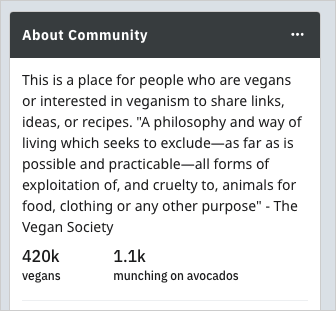
Of course, people who go online during the time you visit the subreddit variably depend on timezone, day, time, and other factors. But this gives you a good assessment of the possible eyeballs you can get to your content.
Now, let's go straight to different methodologies where Reddit can be extensively used.
How to Use Reddit for Content Ideation
Content creators can generate enough ideas when they care enough about the subreddits users' behavior — what and when users post in a specific subreddit.
For instance, you can discover blog post topics simply by searching for any of these terms:
- how do you
- figure out
- I'm struggling with
- tips
- challenge
These are all leading words toward problems subreddit users want to get solutions or questions they quickly need answers.
On content formats
Subreddits have their own content formats users want to see and distribute to co-redditors.
You may opt to not just look at your industry-relevant subreddits, but try to replicate other subreddits' content formats. This is one great way to be the first in your industry to have the content format popularized.
On headline edits
Copywriting is a must skill when creating content to fit your Reddit marketing strategy.
By writing headlines that quickly capture the attention of users, you increase the chances of more eyeballs to your content.
You can check out this latest Reddit research on some tips when writing headlines for Reddit content.
See more:
How to Use Reddit for Content Promotion
Once you reverse engineer what type of content and which content idea has the potential to go mainstream in a specific subreddit, it's time to promote the piece.
Understand the specific subreddit communities you want to engage in. Before submitting any post links, have a good grasp of the community's behavior.
You can browse the past content types — images, Today I Learned, Ask Me anything, text submissions containing advice, questions, and even stories.
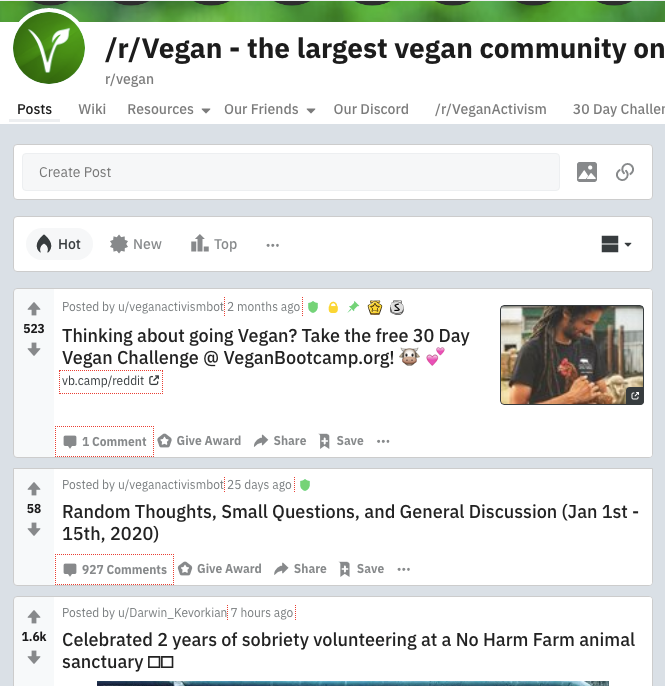
This means you don't jump quickly to the subreddit and post a link.
There would be a period of time where you just learn the behavior of co-redditors, even ask questions to any Ask Me Anything portions to see how people interact.
By doing research, you don't plan to ruin your content marketing strategy for Reddit.
See more: How to Promote Your Website Through Link Buiding
Care About The Community
Identify subreddits that fit your brand. Understand the behavioral patterns of redditors. Start sharing content that provides them value. Care about the community.
If you're looking for an agency to help you out with marketing, you can check out our content writing and link building services.
How to Set Up Google Alerts
What is Google Alerts?
Google Alerts is a content change detection and notification service, offered by the search engine company Google. The service sends emails to the user when it finds new results—such as web pages, newspaper articles, blogs, or scientific research—that match the user's search term. Source: Wikipedia
Maximizing tools that can monitor your brand, websites, and people within your industry is essential to growing your business.
Why is this necessary?
You get to benefit from monitoring mentions of your brand and other industry websites/people in ways such as:
- Understanding how your brand, your product/service, even the staff working for you are being perceived by netizens (this includes checking if there are negative reviews/mentions you need to be aware of).
- Discovering opportunities to network with bloggers, publishers, and non-competing organizations who can help partner for producing well-crafted content in your space.
- Engaging in niche-specific online communities where you can deliver so much value with your expertise by answering tough questions.
- Find out upcoming content creators in your vertical who can be part of your publishing team.
There are a lot more opportunities you'll be missing out on if you don't monitor web mentions.
There are several tools out there that will assist you in this web monitoring. In this post, we'll only cover one free web monitoring tool - Google Alerts.
How to Set Up Google Alerts
Here are four steps to setting up your own Google alerts.
- Go to google.com/alerts in your browser.
- Enter a search term that you want to track.
- Click Show Options to narrow the alert to a particular source, language, region, frequency of alerts, types of results, and which email alerts will be delivered to.
- Select Create alert.
That's how easy it is. You don't have to be a rocket scientist to apply those four steps.
The next question is, where can you apply monitoring web mentions?
How to Use Google Alerts For Business
Seven ways aren't that all to maximize Google Alerts. We couldn't cover ALL methodologies, but these 7 approaches are enough to get you started with monitoring important mentions, websites, and other web elements.
1. Monitoring your brand
By monitoring who mentions your brand, you could possibly find all sorts of things you can maximize for further link acquisition and other content promotion initiatives. Here are examples of what you can find out:
- Publication websites from your industry and from other niches you could possibly tap for guest blogging.
- Up and coming bloggers whom you can connect with for promotion of your content and/or of your offerings.
- Academic organizations that have quoted content of your brand (which can help you generate unique opportunities or strategies to tap this kind of market).
What are the things you should keep monitoring regularly about your brand?
A. Brand Name or Website Name
First, you start by monitoring websites that mention your company but are not linking to you. You get these mentions primarily because you have your offerings (products/services) reviewed, cited, or one of your staff members has been interviewed for a publication feature.
Set up a Google alert to find mentions of your company name. Enter your company name as the term you want to track. You can also add variations of misspellings that you think people can make when mentioning your company name.
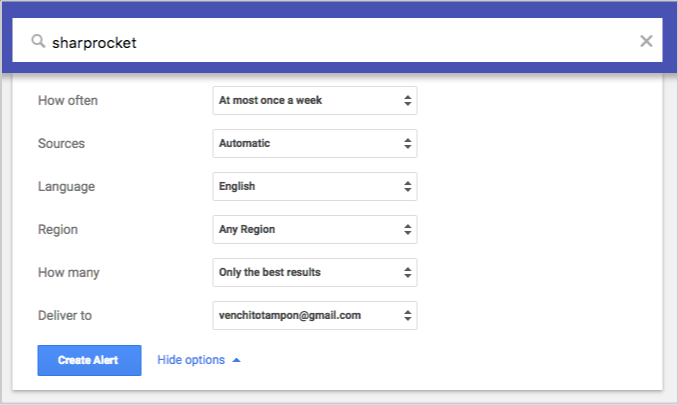
For example, in my former link building blog, Digital Philippines, I often see unlinked mentions of a misspelled brand name - Digital Philipines (missing one letter P).
To look for potential misspelled words or phrases, you may use this Keyword Typo Generator to get a list of likely human misspellings of your brand name.
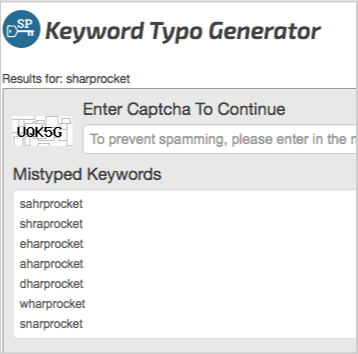
B. Website Name
You would notice that I separate brand name from the website name, as there may be subtleties here.
For example, I"m From The Future is the brand name of a company while its website is FTF.agency (not the website that most would create, e.g. imfromthefuture.com).
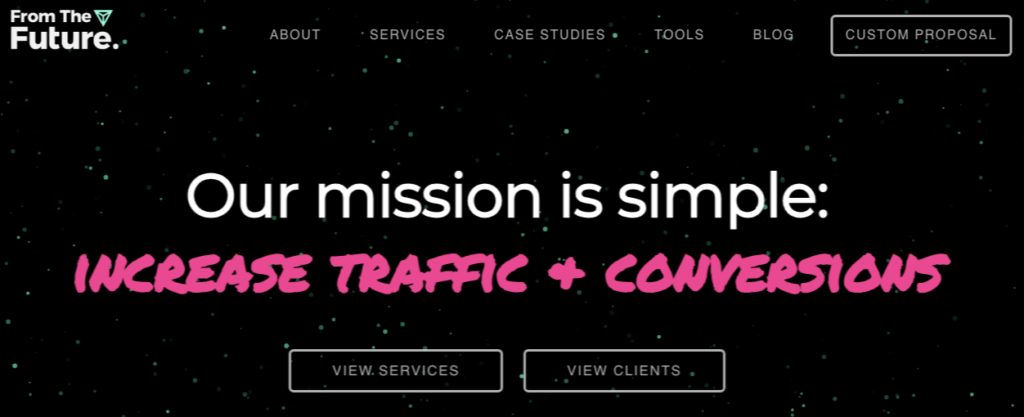
Set up a Google alert for the website name.

You may also add misspellings of the website and variations of TLDs - in case you don't have a .com website. There are cases when people are linked to a .com version of your site (e.g. digitalphilippines.com or ftf.com) instead of the right versions (e.g. digitalphilippines.net or ftf.agency).
C. Team Members
You'll be surprised that not only people would mention your brand name or website name, but also names of people who are working with or for you.

Here are some guiding questions to let you identify who are these people:
- Who are your brand ambassadors? These are people who are paid to represent your brand.
- Who are your staff writers, marketers, or publishers contributing content outside your website?
- Who is the face of your brand online? You may not have a brand ambassador from other entities, but have someone who frequently asked for media interviews or press exposures.
- Who do you send out for conferences to speak or organize events?
Identify these people and list down their names. It's very important to know them first so it would be easy for you set up Google alerts for each one of them.
You'll be wondering now what kind of mentions that those brand personas would receive.
These are just handful types of mentions your staff members could possibly get:
- Dedicated pages of industry conferences and events where one of your staff members highly participated in - these include speakership, sponsorship or community works.
- Crowdsourced content like group-sized interviews (listicle type of interviews) where your CEO, a marketer, or a writer of your team has been asked to answer one specific question.
- Your CEO or top executive's popular quotes or statements, which were highlighted in an online magazine or column.
- A praise statement for a well-deserved award or recognition in the industry that typically mentions the President of your company.
Once you have the list, you can set up individual Google Alerts for each of them.

D. Company products
If you have several products, it wouldn't make sense to create individual Google alerts.
First, there will just be clutter in your alerts, as you will probably get alerts for mentions of products that are not yours.
Second, if you have thousands of products, not all of them are getting mentioned on the web - we'll get into this a little bit later.
Here are some recommendations if you want to set up alerts for company products.
Start with products that are attached to your company or brand. There are products where your company has created in the first place. One example is USANA (I'm not affiliated with them), but they have products where their brand is attached to it (e.g. USANA Essentials).

Go over your popular products or highly sellable products. Chances are, if they are popular, they'll get some mentions one way or the other on the web. List down your popular products or those ones that get positive reviews.

Setup another alert for each of your company products - both for products attached to your brand (so you can be very specific with alerts) and highly sellable products.
One good note to consider is when you're a retailer of products. If you have an eCommerce site and you're reselling products of other companies, this kind of alert monitoring may not be a recommended option for you.
Even if you find all mentions of a popular product, when you reach out to people and ask for links of unlinked mentions, you won't get any, since you're not the manufacturer of the product.
2. Monitoring Your Competitors
There are more reasons to track your competitors than just knowing their popularity level and how good their products are as far as positive reviews and customer engagement are concerned.
Here’s why you should monitor competitors for online mentions.
- Direct link opportunities
- Potential publication websites for interviews
- New distribution websites for content
Let's tackle each of this one by one.
Direct link opportunities
By monitoring your competitors, you'll find a website with a dedicated listing page that linked out to two or three of your competitors.
If the page is in context with you and is currently being updated, it's an opportunity for you to reach out and ask for a link.
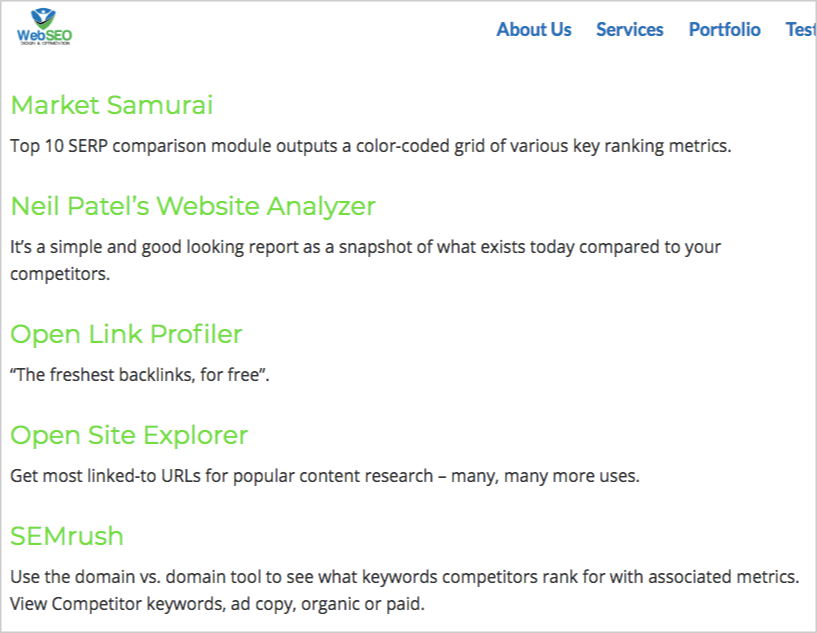
You'll find all sorts of mentions that are linked to your competitors, but not you. If you could figure out why they get mentioned by checking and understanding page titles, section titles, and descriptions before link placements, you'll get a felt sense if you have a chance of getting a link as well.
Potential publication websites for interviews
Your competitors may be getting media exposure through interviews - both group, brand or brand persona. By tracking which publications have mentioned them, you may have a list of websites to collect and qualify based on the probability of getting featured.
New distribution websites for content
What monitoring your competitors allows you is that you'll find new content distribution websites that are sometimes unique to your vertical. You would often find out that there are websites not included in the list of "top [industry] forums" or "top [industry] submit content" articles.
By setting up alerts, you will discover new distribution websites that are very unique to your industry.
Setting Alerts for Competitors
For competitors, here are some search terms you can track regularly. Customize these alerts on the basis of your competitors' brands:
- "YourCompetitorsBrandName"
- "YourCompetitorsWebsiteName"
- "YourCompetitorsProductName"
- "YourCompetitorsBrandAmbassador"

Recommended Tip in Finding New Competitors
In web monitoring, you don't just stick looking for who mentioned your current competitors or competitors you would consider relevant to your business.
But it's also critically important to seek out new competitors in your field.
There are three reasons why I think it's good to discover new competitors in your space:
- You will see their current strategies that allowed massive results in a short period of time (rare as it should be, but it is possible to grow a brand quickly).
- You will notice what these new competitors are trying to do to differentiate from you and from the competition (are they focusing on unique opportunities you may have missed?)
- You will seek out news publication and content distributions websites that are receptive to new or startup brands or websites.
If you wish to find new competitors, you can set up Google alerts to discover them.
- "YOURPRODUCTNAME VS"
- "COMPETITORPRODUCT VS"

What this particular Google alert does is that it gives you mentions that compare your product or your competitors' product over a new competitor. Though the newfound competitor may not be as new as you think, if it's not on your list (or you haven't checked it out), you can take a look and see if they're a relevant competitor.
3. Monitoring Coined Terms
Whether you're a solo writer or part of an editorial team, you have may have coined some terms in your industry that have been frequently used by other publishers or content creators.
If you can find who uses the coined term but haven't linked to the original blog post on the topic, then that may be a good opportunity to earn more links in the process if you do some outreach.
For example, Brian Dean of Backlinko coined the term, "Skyscraper Technique" . Since he has published and popularized that SEO strategy, a lot of SEO and internet marketing bloggers have started applying it on their own SEO campaigns and have shared results in a form of case studies.
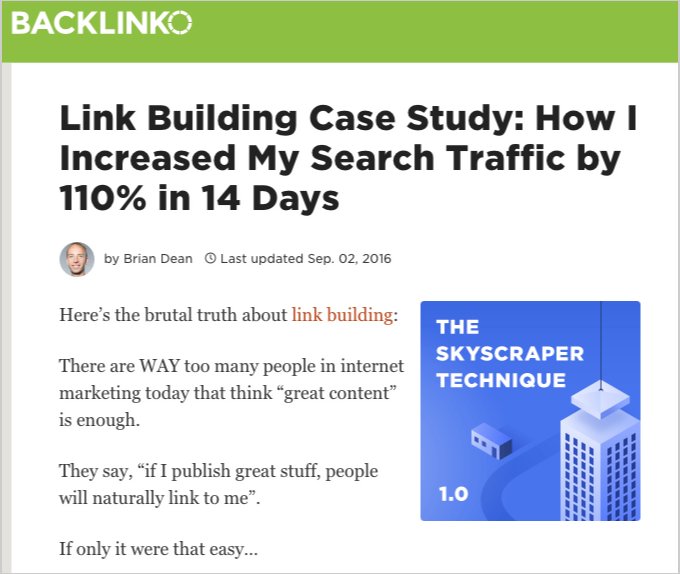
By setting up a Google alert, you'll be able to receive notification alerts of blogs that mentioned or used the exact term on their blog content. You could enter any of these variations of terms to get the most of the alerts.

Below are some examples only.
- skyscraper technique
- skyscraper strategy
- brian dean skyscraper
- skyscraper backlink
Of course, you'll be thinking how this would be possible for your industry or for the industries of your clients if they have coined one term or at most, just planning to do so.
Here are some things you need to consider if a coined term is worth monitoring.
Does your coined term affect other people's performance both professionally or business?
Your coined term should literally get people to take action, assuming it provides a unique value that when practiced or applied to business and life can make a significant difference.
The reason is that if the coined term affects results, it would later be referenced on blog posts and case studies of publishers in your space.
Can your coined term be categorized under a specific section in your industry?
If a coined term has been placed under a category of a blog or publishing website, it increases its visibility of getting found by people who may refer to it in their works.
Every time you have coined a term and people are starting to use them, do not neglect setting up a Google alert, even if the coined term is not yet too popular.
By waiting for months or years to get traction, you'll have missed out on early mentions of your coined term, which were supposed to be converted into initial links by then.
4. Monitoring New Guest Publications of Publishers
One of the best practices in executing a guest blogging campaign is finding where's the next blogs or websites top industry guest publishers publish their content.
Monitoring new guest publications of writers is like semi-automating the process of finding new blogs to submit content to. Not only does it speed up blog prospecting, but also actually helps filter those blogs that really accept guest contributions (from those who don't) and blogs that are of high quality and with probably good engagement (from those blogs that are not).
Before setting up a Google alert for that purpose, it's important to first have a list of top guest bloggers in your space. One important note is not to restrict yourself to bloggers, but also look for industry practitioners who are publishing their works online.

Once you find them, you can create different Google alerts that track a variety of mentions. Here are examples of these varied terms:
- "BLOGGERNAME" guest post
- "This is a guest post from BLOGGERNAME"
- "guest post from BLOGGERNAME"
- BLOGGERNAME "new post"
- "guest author" BLOGGERNAME
- "guest contributor" BLOGGERNAME
5. Monitoring Niche Questions
One way to build up your branding is to answer as many niche-specific questions as possibly can - but where your expertise really lies.
The first in many effective methods of finding industry questions is to subscribe to industry forum newsletters, subscriptions or alerts where you'll receive daily or regular filtered questions.
What I've found with the aforementioned approach is the vulnerability of distributing content on only one platform or website. Vulnerable given if the niche forum or Q&A website has been turned down, your distributed content in the form of answers may be wasted.
As an alternative, you can set up Google alerts for forums or Q&A sites.
What you would like to monitor are the following:
- Niche-specific questions in the top forum and Q&A websites (e.g. Quora)
- Newly added categories and sub-categories in the top forum and Q&A websites (e.g. SEO tools section in Quora)
- New industry and general forums and Q&A sites
Let's go over each of the above opportunities.
Niche-specific questions in the top forum and Q&A websites
Apparently, the top-most opportunity you'll get by setting a specific alert for this is you'll find the exact industry questions you can answer.
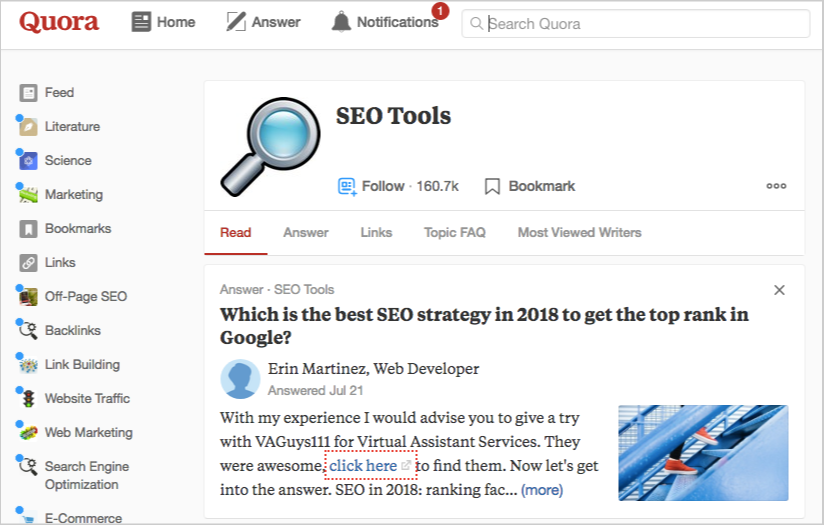
If you have regulated your alerts to real-time updates, you can set the alert to real-time. The earlier Google gives the notification, the earlier you can answer the question.
Be prompt in answering questions as they tend to stay a little longer and often have the benefit of receiving more views and engagements from both people who are looking for answers and people who intend to answer those questions too.
Newly added categories and sub-categories in the top forum and Q&A websites
I often see this happening in top Q&A websites given the similarity and demand of answers from community users, and it would be more helpful for users to create a separate specific section on the topic.
By being the first one to dominate a targeted question market, you'll be able to capture more audience from the answers you provide.
New industry and general forums and Q&A sites
New different forums arise from the need to engage with very targeted audiences.
You'll not be able to find these new forum websites by just searching, as they may not be listed yet in top niche forums articles.

However, you may discover them by monitoring on Google Alerts. Start by tracking these search terms:
- YourNiche "forum"
- "Quora" "topic"
- "LongTailQuestion" "forum"
6. Discovering New Freelance Writers
The demand for freelance writers has grown over the years, whether its purpose is to create a series of articles for a company blog or write content fairly distributed on other relevant websites.
However, the problem I often see is finding freelance writers who are highly skilled and have a good track record.
More than that, if you can look for freelance writers who have connections with other publishers in the field, it would be a big plus for your link building campaign. You need not worry about an additional list of prospect blogs and you'll be able to spend more time in other phases of the link building campaign (i.e. making customized strategies).
To discover new freelance writers in your field, you can utilize Google Alerts.
It is best if you have specific job board sites in mind (e.g. jobs.problogger.net), where you can create a custom Google alert for them and be able to get a supply of alerts for technical writers.

Here are some phrases you can use as tracking phrases in Google Alerts:
- “Jobs.problogger.net” + “Travel”
- “Buffer” Design
- “SEO Tools” Freelance Programmer
- “Looking for a freelance” Pixar
7. Generating Content Ideas
Google alerts aren't only useful for monitoring mentions of your website and of your competitors, it's also a great tool for generating topics for your content.
There are many content marketing tools out there that can help you with discovering new industry topics. Buzzsumo and Ahrefs' Content Explorer are some of these examples for scaling content ideation.
As far as the receiving method is concerned - receiving email notifications on what's popular out there in terms industry data, and newest reports - you can use Google Alerts.
To set this up well, I would start by using the filetype advanced search operator along with the topic of choice.
This is the exact search term you'll track using Google Alerts.

Once you have created the alert, you'll be receiving email notifications of new pdf published. Examples of these are:
- Fact sheets of top industry organizations
- Data survey and reports for relevant and timely topics
- Evergreen academic resources
These niche resources can help you craft better content with supported data and powerful insights from authoritative entities in your space.
How to Manage Google Alerts
It's one thing to set up Google Alerts. It's a different thing to manage them.
Of course, you'll receive thousands of email alerts, and that's where the problem lies.
You have to be able to manage Google Alerts in its most simplistic way.
One tool that I think can effectively help you manage alerts is Google Inbox.
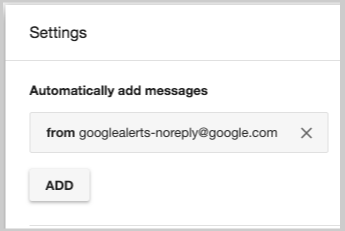
When you sign in, you'll see a section called, "Bundled in the Inbox". This is where all your inbox filters will be placed.
Start by creating an inbox bundle. Insert the email googlealerts-noreply@google.com - this email is the exact automated email from Google Alerts.
You can also filter alerts based on the campaign type or purpose. For example, for alerts that give you new blogs to target for content distribution, you can create an inbox bundle for Guest Blogging. To track unlinked mentions, you can make another folder for Link Reclamation.
By doing so, you refine the process of managing Google alerts and let you focus on the current campaign type. One by one, you deal with each email alert.
Maximize What's Free
It's easy to be overwhelmed with new premium content marketing and mention tracking tools. But if you can get your hands on free tools like Google Alerts and get the most out of it, you'll never know how much it can help you semi-automate some of your link building and content-promotion practices.
If you have additional tips in using Google Alerts more effectively, let me know in the comments.
How to Use Twitter Effectively For Link Building
Social media platforms have been useful places to promote the brand's content.
Certainly, this includes the idea of using Twitter effectively to build connections with like-minded people, to get more eyeballs to content, and to acquire natural links in the process.
You don't use Twitter to spam people with links to your content, all the time. There is a proper way of sharing your content on the platform, and be mindful of being too aggressive just for the sake of links. That 2009 strategy doesn't work anymore.
How to Use Twitter Effectively For Link Building
Here are four useful tips on how to use Twitter for link building and content marketing campaigns:
- Experiment with Tweetstorms
- Look for Interview Requests
- Take advantage of Twitter chats
- Build Stronger Networks
1. Experiment with Tweetstorms
If you're a marketer or business person, you may have seen threads of tweets of famous founders — these are tweetstorms.
Tweetstorm is a thread of tweets conveying messages, principles, ideas, stories, or trends. In any topic area, a tweetstorm can be a powerful way to drive more followers to your brand.
Specific to link building, you can gain new connections you can eventually reach out to for potential content contributions or content collaborations.
It's a subtle approach of building your influence around a platform that sticks.
Here are some examples of the best tweetstorms.
Ben Collins on Google Sheets Productivity
Mega thread of #GoogleSheets #productivity tips & tricks coming up...
Starting with this humdinger
Type “https://t.co/AowcjCD40h” or "https://t.co/kOOFaQOOov" into your browser to instantly create a new Google Sheet
(1/n) pic.twitter.com/TvB5cUk15D
— Ben Collins (@benlcollins) January 14, 2020
Why it worked:
- It starts with a topic idea "mega-thread of Google sheets productivity". This sets the foundation and know-how to people who'd likely follow all tweets in that thread. This gives people the general context of the tweetstorm.
- It includes hashtags to gain more visibility searching for it (#GoogleSheets and #Productivity).
- It contains visual formats (e.g. gifs).
- It provides actionable takeaways for each tweet in the tweetstorm.
Jensen Harris on Loving Startup
Leaving a big company job for a startup can rejuvenate your career and make you love work again.?
But landing a startup job requires relearning some things, especially if (like me) you logged years and years at Microgoogfaceforceazon.
Here are six things I wish I'd known:
— Jensen Harris (@jensenharris) April 12, 2018
Why it worked:
- His career tips are based on his experiences (things I wish I'd known).
- It gives straight a context to which audience the tweetstorm is for.
- He answers to every reply to tweets in the tweetstorm — giving more visibility to the entire tweetstorm; attracting more replies and retweets.
How to use tweetstorms in gaining traction for links:
- Brainstorm on what topic idea works best in a tweetstorm — it should be something interesting, either it is a story, concept, or how-to steps (quickly be narrated in a tweetstorm).
- Be subtle in adding links to your content. Link to your page as long as the tweet or a reply to tweet replies make sense in the context.
- Hooks the people to see your other tweets by making your first tweet cuts the deepest. Your first tweet should also work as a singular message.
- Share relevant links to your content as separate tweets after a tweetstorm. New followers from tweetstorms would likely see and consume your content — which results in more social shares and links to your page.
2. Look for Interview Requests
There are many methodologies for getting more exposure to high-end industry publications.
You can get your articles published in major niche websites, use HARO effectively for interview or story requests, or approach journalists using Twitter.
For months, I've been tracking requests from bloggers, content creators, journalists, and other publishers who are looking for stories and guests for their show (e.g. podcasts).
Here's what it looks like in my inbox:
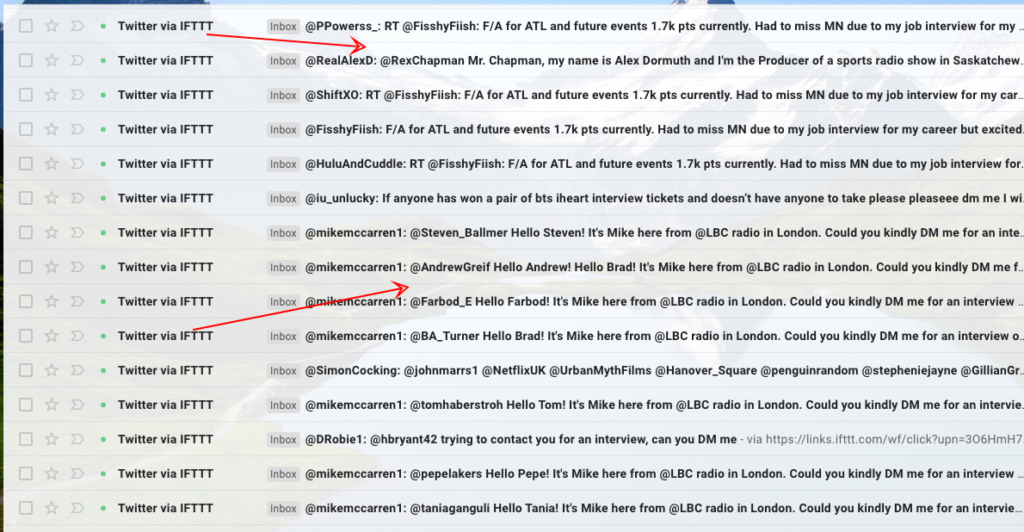
I keep track of all these emails from IFTTT, which is a setup that I've created to easily automate looking to interview tweets from publishers.
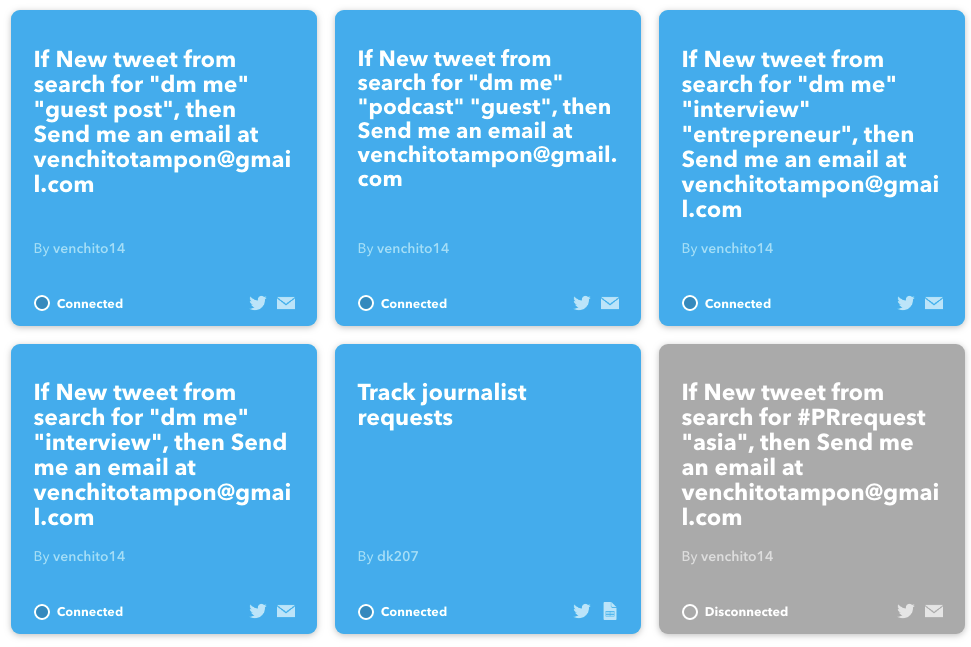
IFTTT allows you to create applets or recipes that trigger whenever there are tweets with (#prrequest OR #journorequest OR #haro). These tweets are sent to your inbox, which is often frequent so you need to have a filtering process to remove irrelevant tweets (looking to interview tweets not relevant to your niche).
Additional tips to use Twitter effectively in gaining new interview invitations (for links):
- Share your content pieces regularly on Twitter. It helps in gaining visibility for your brand to attract publishers and other media creators, such as podcasters, to invite you to their shows.
- Promote your latest interviews (media interviews, podcast guestings, round-up articles where you share your best inputs).
- Create private Twitter lists of major and minor publishers in your industry. Keep track of what they do by monitoring their tweets — you may never know moments they'd post tweets looking for interviewees.
3. Take advantage of Twitter chats
Twitter chats are scheduled group discussions on a particular topic, normally with guest experts to answer a series of questions.
In the digital marketing field, you'll see a good share of these Twitter chats every week.
SEMRush does this well.
Q1. You created content that didn’t meet goals. How do you explain this to clients or the c-suite? Next steps? @CTrappe #SEMrushChat pic.twitter.com/Pql6Ipz2CM
— SEMrush (@semrush) January 22, 2020
Why it worked:
- Scheduled activities are likely to be included in someone's calendar. This allows people to regularly attend to your Twitter chats — and even share it with their own networks if they find it worthy of their time.
- Invite guests to your Twitter chats to get a ripple effect in social sharing. Interviewees will normally promote their scheduled Twitter chat to their followers — this gives chances of gaining new traction to your show.
- Have a list of questions ready to answer. Invited guests will then know what to do during Twitter shows, as opposed to randomly asking them with anything.
4. Build Stronger Networks
Be very subtle in your approach to Twitter marketing.
Use Twitter to expand your networks.
One recommended approach is to customize your tweets when sharing useful content in your niche.
Analysis of 700,000 articles:
While long-form content may not be a ranking factor, it sure gets shared/linked-to at a higher rate (& anecdotally, tends to rank for more terms)
Anatomy of Top Performing Articles https://t.co/unfsnpzwyO
thx @Kevin_Indig for the tip. via @semrush pic.twitter.com/gwZAG8NOzX
— Cyrus (@CyrusShepard) January 15, 2020
Instead of following paths of basic tweet lines to content.
When you've actually read the content piece, you know its best points. So start sharing what you learned from the content and highlight them in your tweets.
This initiative helps you to stand out among people who shared tweets, which increases your chances to be on the radar for your brand to be noticed by the original content creator.
How to build stronger networks using Twitter:
- Regularly share the best content pieces in your industry. It only takes 3 to 5 minutes to do this when scheduling posts — you can use Buffer for Twitter scheduling.
- Start participating in threads where you think you can add value with your inputs. Engage people with your expertise.
- Create your own Twitter list to follow influencers in your industry. This method also allows you to generate ideas for your content, as you're able to see what types and topics of content your influencers (who are likely to link to your site) are actively sharing on Twitter.
Learning How to Use Twitter Effectively
Follow the basic principles and tips I've shared above then experiment on new ways on how you can maximize Twitter in marketing your business. Let me know in the comment section below if you have any questions.
21 Effective Ways to Drive Traffic To Your Website
Whether you’re a newbie blogger, business owner, or a big brand, you’d always ask the question, “how can I drive (more) traffic to my website?”
There are lots of tricks and strategies scattered on the Internet on how to do that exactly, some aren’t applicable in your industry, others are executable. However, if you’ve tried tweaking them to suit your needs, it might be one of your traffic generation strategies to look over this 2017.
Here are 21 ways on how to drive traffic to your website with steps to execute them right in order to grow your online business this year.
Let’s get started.
1. USE PHOTO ALBUMS FOR FACEBOOK POSTS
I’ve been testing Facebook as one of my top referring sources for my career development blog (still under content development test).
There are tons of content you can actually create that can generate more followers to your page, which will drive a good amount of traffic to your blog/site. But what I’ve found out to be most effective are content types that are native in Facebook: videos (with transcripts), how-to album posts, and quotes with an unexpected hook.
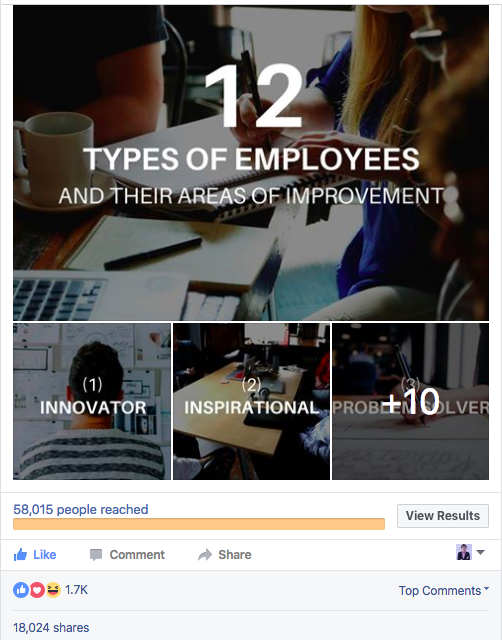

Check out how I increased my Facebook page from 2,500 likes to almost 26,000 followers in 2 months.

What’s more amazing is the virality of these single pieces of content that only takes a few hours to create.
There is only one link displayed on the page, evenly placed it on the right side, which means people who’d been through my page, engaged with my content and wanted some more, clicked on the website and read the blog posts.
If you’re not that photo-editing savvy, there is Canva that can help you scale your visual content creation process (20 minutes is what it takes).
Protip: Use Picjumbo.com and Google Image search (tools - usage rights - labeled with reuse for modification) to download non-copyright images, so you don’t have to worry about this issue later on.
2. VIDEO OUTREACH WITH USELOOM
Some industry bloggers receive “guest blogging pitches” almost every day, especially if they’ve had a huge amount of followers/visitors and authority, that people want to absorb a portion of those followers and drive them to their own sites.
This made it a lot more difficult for your outreach emails to get opened and to receive a “go” for your guest post topic”.
Standing out among these “guest blogging emails” by providing as much value as you can is the key to getting as much value in return for your brand.

You can screen record yourself proposing three or four relevant blog topics customized for the guest blog. Scale the process of video outreach to 30 or 50 guest post prospects using UseLoom, which is a Chrome Extension tool.
3. PUT DESCRIPTION LINKS TO YOUR YOUTUBE VIDEOS
There are approximately 81 million videos uploaded currently on Youtube. That insane number of content is enough to get yourself into the Platform and start producing engaging and informational content.
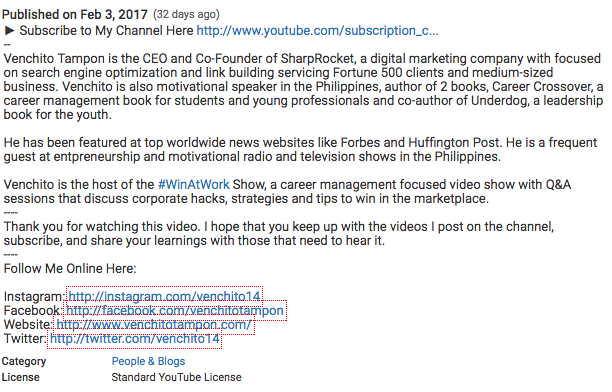
How can I drive website traffic from Youtube?
Put a link to your website in the description box of your videos. When someone watches your video and wants to know more about your brand, they can easily click on the link.
4. DO OUTREACH TO BE INCLUDED IN EMAIL ROUNDUPS
Basically, link roundups are pages that include external links to the latest useful resources and content curated by the blogger himself. Its value proposition is helping readers to get updated with the latest trends, tips, and strategies on a particular topic, without the need to scour every single blog and check their latest articles.
If you haven’t got a link from a link roundup in your industry, you’re missing a good opportunity to drive traffic to your website.
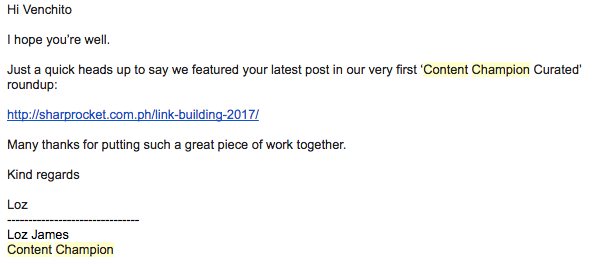
A simple outreach to these link roundup curators allows you not only to receive referral traffic from their link roundups (if your content has been featured), but also gives you the leverage to build relationships with them, that will soon propel your brand to other sets of targeted audiences.
5. CREATE A COMMUNITY-BUILT FACEBOOK GROUP
If you’ve got the audacity to create a community, creating Facebook groups is for you. Its culture of value exchange can help you generate a certain number of visits for every content you post.
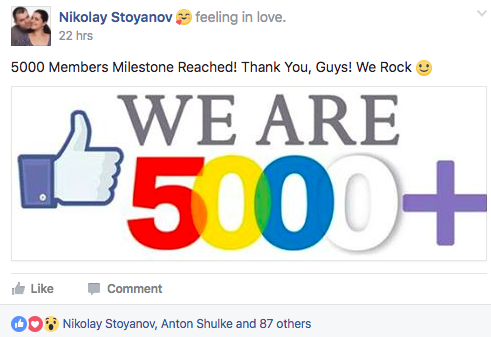
If you think it’s not for you, then invest in spending 10 to 15 minutes of your day answering questions on a well-built community Facebook group. Here are some examples of answers I shared in the past few days.
You can put a link if it’s something that’s relevant (see example below) or just is direct with your answers.
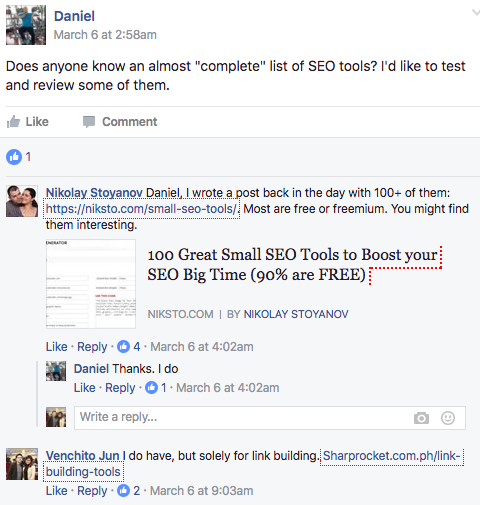
You won’t get direct traffic instantly by doing so. But with consistent efforts to answer industry Q&As can help you build your brand as a go-to source of information on a particular topic theme.
6. NEWSJACK CONTENT CREATION
Any industry has its own updates and trends that you can leverage as new content for your blog.
Because of the luxury of a good amount of searches by people following those topics, you are able to give a boost of targeted traffic to your site.
Start by creating a list of industry influencers. This way, you’ll be able to see what trends/topics people are watching out for.
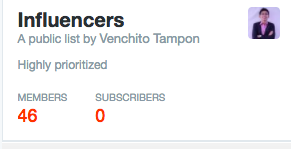
Then put in the work to create content that doesn’t just announce an industry trend/update but delivers value by sharing your own insights to the topic (that would differentiate you from other content publishers in your space).
7. REPURPOSE EXISTING CONTENT TO OTHER CONTENT FORMATS
It’s easy to dive into the new content ideas you’re trying to come up with for your brand, but when you start looking in your content inventory, you’ll start seeing “high-performing assets” that can be repurposed into other content formats.
If it’s a how-to or list type of post, turn it into a slide presentation then upload it to Slideshare. Then, redistribute to other visual directories.
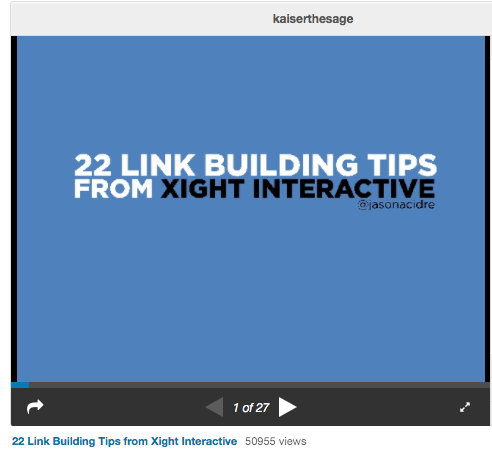
Video content can also be transcribed and published as an article, let your editor execute the proofreading. Publish it in Medium to gain some traction or use it as a guest post (if relevance fits) to absorb new targeted visitors to your blog.
8. TIME YOUR REDDIT SUBMISSION
If you’ve got an army of co-Redditors, you’re likely to get your content up in Reddit once you submitted a piece of content. Otherwise, the Reddit market will decide if your content is good enough for massive upvotes.
One trick to increase your content’s organic search visibility is to time your posts when most active members of a specific sub-Reddit are online.
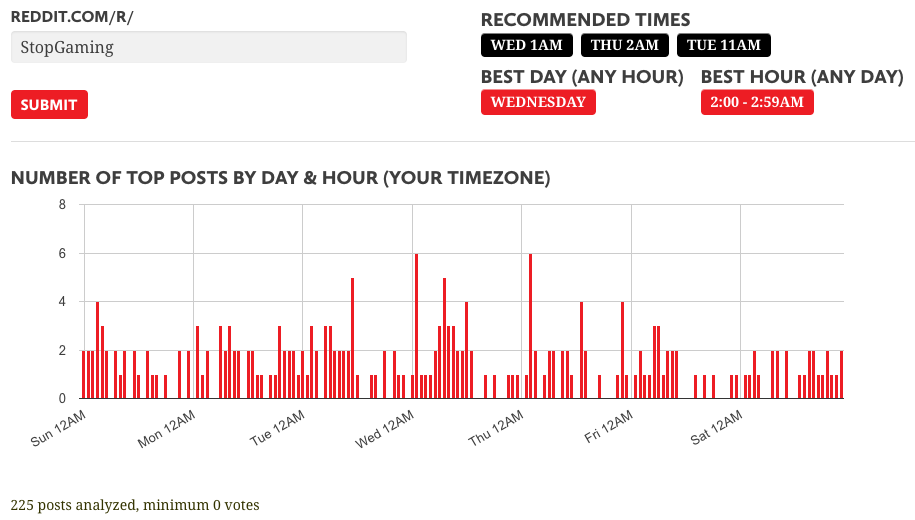
You can do it by checking what day and time are best to submit content to Reddit. SiegeMedia’s creative Reddit tool allows you to do that and make sure you maximize that micro effort of submitting a post to the platform.
9. IMPROVE CONTENT WITH NEW RANKING KEYWORDS
If you’re producing content that caters directly to the main topic, you’ve got chances of receiving other ranking opportunities for relevant keywords (within the same topic theme), aside from dominating your main keyword.
If you can find other keywords that are likely to give you a boost in organic search visibility, you are increasing your brand equity on main industry topics.
SEMRush allows you to find already ranking keywords of your page, as well as of your competitors, and see what they are up to (giving you an insight as to how you can better improve your own content by adding sections (subsections) to target relevant long-tail terms.
10. ENGAGE READERS WITH STOCK VISUALS
In this design-heavy generation, using stock photos is imperative to appeal to your target readers. The lazy common way of adding non-stock photos you’ve searched for in Google (worse if they’re copyrighted and can’t be reused) will do more harm than good for your content.
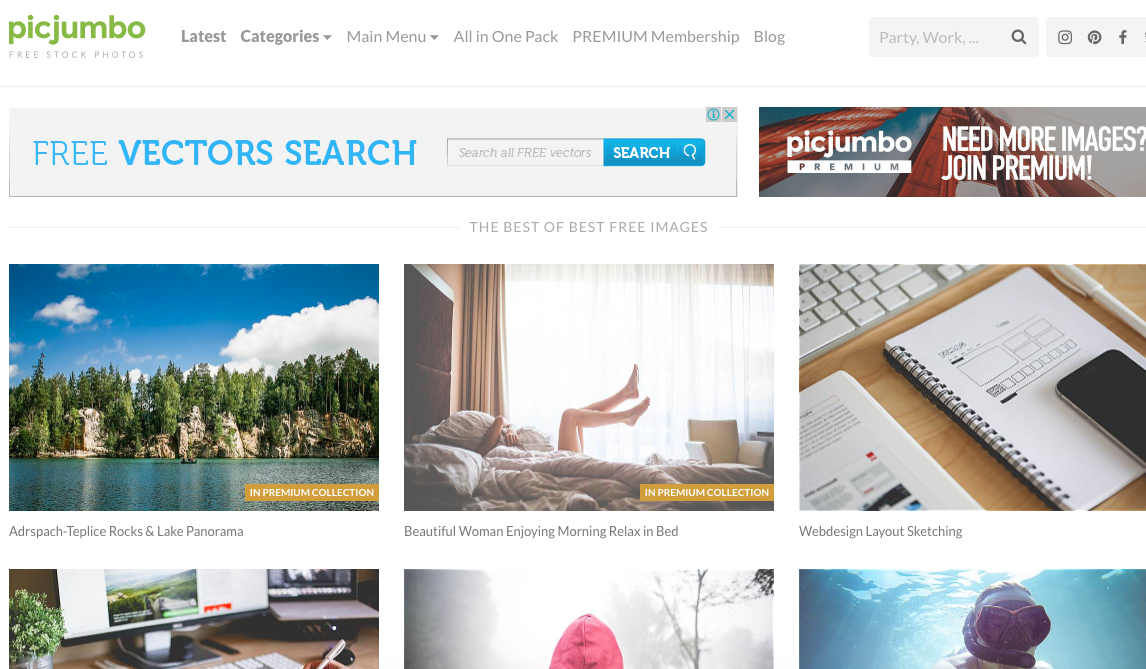
The truth is, you won’t get additional traffic simply by adding stock photos (even designing it well if you have the audacity to do so), but letting your current visitors stay on your site allows you to acquire indirect benefits of additional social shares because the overall content is good. This translates to more targeted referral traffic.
I’ve been using the following sites to get stock photos and design them by myself thru Canva:
It only takes five minutes to have a well-designed featured image for one blog post.
Tip: Use the search tool function of Google to filter searched images that don’t have any copyright issues (to ensure you’re not passing over to one’s property).
11. CONNECT TO INSTAGRAM INFLUENCERS
The power of Instagram to absorb new followers is insanely useful in this age where we can create micro-content every day.
Besides using 10 to 15 hashtags in the description of your photo, you can also tap the power of influencers to provide you with enough discovery for your brand/content.

DM’ing people to build relationships and offer substantial value to let your brand be discovered on their Instagram profiles allows you to get social traffic straight to your profile and/or to your website.
12. DISTRIBUTE CONTENT TO YOUR EMAIL LIST
I’ve seen a lot of micro-content performing well on distribution nowadays since the more companies whether in B2B or B2C are publishing content on a daily basis, the higher the competition there is to consumers’ attention.
If you’re strategic enough with your content, you can maximize your own email list asset to drive consistent traffic to your website.
Though marketers ruin the email marketing platform with so many self-promotion ads, there’s still room for engagement and direct traffic we can get from email alone.

Maximize your email distribution by providing enough value to them on a regular basis. Build brand equity over time.
You may want to test out this email tester tool to improve your emails' subject lines.
13. MAKE 11X CONTENT WITH ADDITIONAL CONTENT FORMATS
10x content has been a common term in the marketing space today. While this could be the era where a lot of publishers are producing long-form content, there would still be a few who don’t see much results from their efforts.
Long-form doesn’t mean depth of content. Even if you created a 10,000 words guide that others in your niche have also done, but if users are staying enough to consume your content (check your site’s time on page), you still lack value.
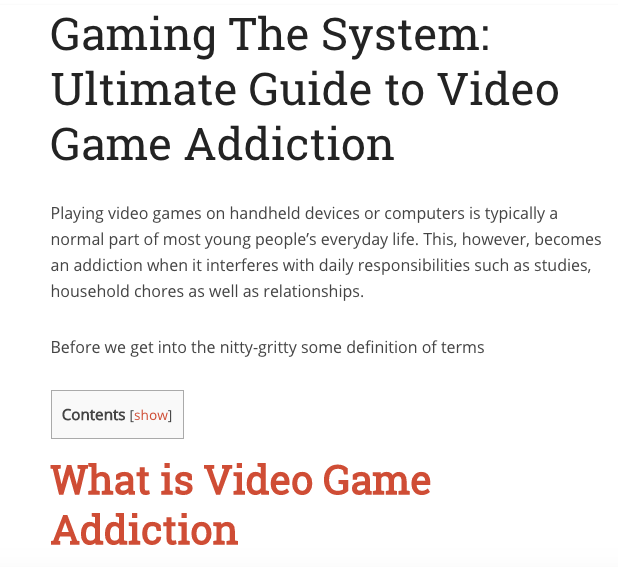
One way to better engage your users in your content is to add other content formats to make it interactive. Images, videos, slides, and other media formats that are relevant and cater to the same topic you’re discussing shouldn’t be hesitated to add to your content.
14. INCREASE SOCIAL REACH WITH PINTEREST
If you’re in the mommy/parenting/health space, there’s a huge opportunity waiting for you in the Pinterest platform.
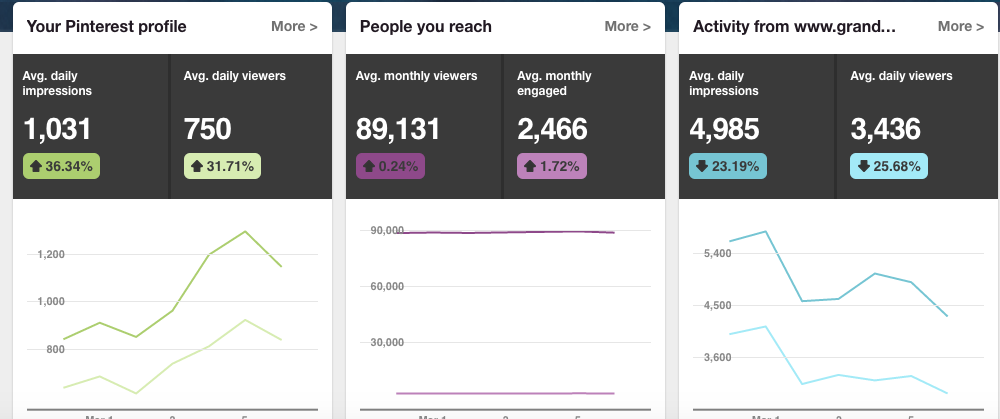
If you practice it right, you can see engaged visitors on Pinterest that can go to your website and start following you.
You can check your top Pin post impressions and find the common topic theme that you can start focusing on in a certain period of time (let’s say for a week). This gives you more room for organic reach opportunities that’ll eventually drive good social traffic to your website.
15. SCALE CONTENT CREATION WITH CONTENT TEMPLATES
If you’re handling several accounts, whether you’re in an agency or an affiliate marketer with many niche websites, you may be having difficulty in scaling your content creation process.
The truth is there’s an easy way to scale the process simply by utilizing content templates (common content formats that have been successful in engaging consumers/users).
You can check out this post by Ross Hudgens on 15 content templates that you can use to successfully produce content in a scalable manner.
16. HACK UPVOTES IN REDDIT
Building your own tribe of content promoters who are ready to push your content up on specific platforms gives you the luxury to get initial traction for your content.
Though in most cases, you’ll see this happening in the marketing space, other industries are also leveraging this strategy to build mutual value exchange with each other (using each profiles’ social followers to promote mutual content).
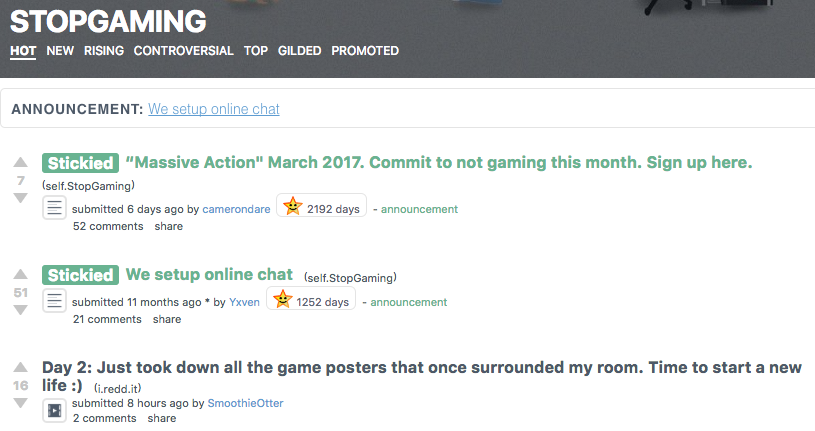
This requires the execution of reaching out to other industry bloggers who aren’t competing with your offerings. Always provide value here as you don’t want to look like an aggressive marketer trying to leverage others’ ability to promote content pieces.
17. DOMINATE WITH QUORA
Building your brand (whether on a personal or business level) is executable in Quora. Like other Q&A sites, your goal is to answer relevant questions that received a substantial amount of views every week/month. This allows you to scale the process, as you are able to grow your profile answer views over time, particularly if the topic is most commonly asked for in Quora.
Check the question’s potential reach by looking at the number of followers for that specific question and the top or even the average number of views of the top answer. This would give you an idea of whether the question is worthy of your effort to answer.
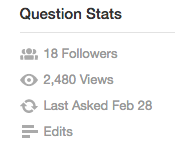
You can also check if the exact question is sitting on the first page of search results when you directly copy and paste it to SERPs. In most cases, this type of question is consistently attracting new visitors, thus, helps you answer to increase its potential reach.
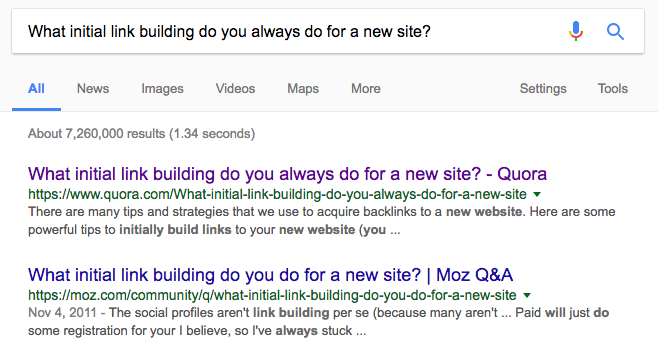
Execute this process daily (choose 3 to 5 recent questions) and become the top industry writer in Quora.
18. SWITCH YOUR CONTENT TO A NEW HIGH-VOLUME KEYWORD
David McSweeney of Ahrefs had a case study on how they were able to increase the blog’s traffic by switching keywords to old-performing content.
The process is simple:
- Analyze existing keywords of the content you’re currently been ranking for.
- If you haven’t seen any main keywords you can potentially switch to potential ranking, conduct keyword research to find out if there are main phrases with higher search volume than your current one.
- Optimize your content for new keywords by changing the page’s URL, meta title, and other on-page factors.
- Setup a 301 redirect of your old URL to your new URL (this is extremely important).
- Use Fetch to Google in Console to force Google to crawl the page.
This works effectively if you’ve got pages that aren’t performing well in search and be instead switch to other relevant keywords that have a high organic search count.
19. DO REVERSE GUEST POSTING STRATEGY
If you truly want to maximize your time to acquire high-quality backlinks to your site, you should look for ways to scale the link building process.
One powerful method to build links that require no outreach and that attract potential linkers to your website is to do a reverse guest posting strategy.
It’s the counter tactic of the common guest blogging technique that allows you to receive pitches from potential guest bloggers.
To start with, you can create a “write for us” industry page that contains the following formats:
- Guest blogging guidelines
- Industry topic themes accepted
- Sample approved guest posts (if you have accepted guest articles in the past)
Once done, build internal links to this page by linking to it from your other blog pages. This allows you to bump up the page’s organic rankings. The goal is to dominate the industry key phrase “industry write for us” or industry guest post”. This will then open opportunities to receive guest blogging pitches.
Interact with industry bloggers who pitch you for guest posts and see how you can maximize this opportunity. You can then offer mutual benefits, such as accepting his/her high-quality article to be published on the site while being a guest on his podcast show, if he occasionally does it.
Another value proposition that you can offer is to build a backlink to your other relevant website (Site C) from the guest blogger’s site.
Here’s the scenario: Guest blog (Site B) acquires a backlink from your first site (Site A) through a guest post. You offer to get a backlink from his site (Site B) to your other relevant blog (Site C).
This better works if you have two websites that are thematically relevant to each other (e.g. same health industry).
20. TAKE ADVANTAGE OF QUORA/PINTEREST RANKING PAGES
Top of the funnel keywords with low competition is goldmine opportunities. One way to find them is to use SEMRush to generate industry keywords where Quora and Pinterest pages are ranking in their search results.
Given that these pages of Quora and Pinterest dominate the search, you have the potential to rank on the first page if you’ve created good content to service the search users for that topic.
To start with, plugin quora.com and pinterest.com to SEMRush and search the industry/topic theme of your site in the search bar. This will reveal keywords you can potentially target to rank for your brand.
For example, the keyphrase “youtube addiction” has a good amount of search volume but a Quora page is ranking on the first top-five spots (as of date..).
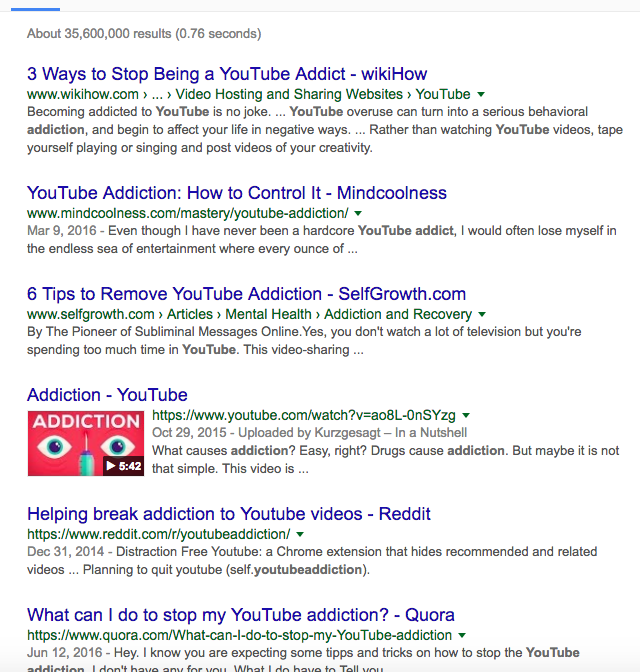
If you’re in a counter-addiction space, this is one of the keywords that can give you some good traffic every month.
21. LEVERAGE BIZDEV PARTNERSHIPS IN EMAIL MARKETING
Targeted email newsletters are powerful sources of referral traffic that you can take advantage of in your space.
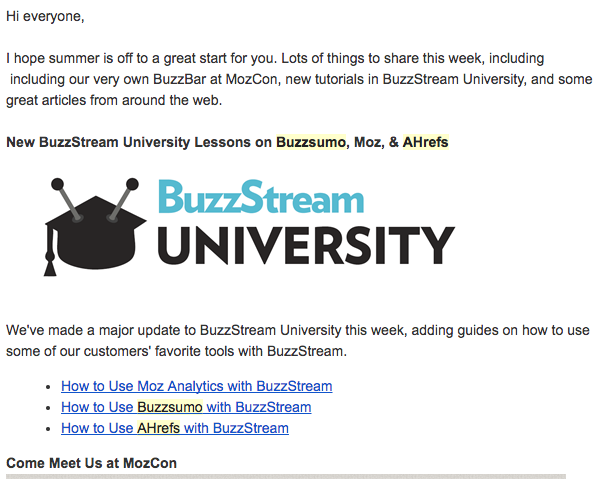
If you have established authority in your niche, you may want to maximize opportunities of getting in touch with bloggers who had a substantial email following, particularly those with high potential of linking out to relevant external blogs (e.g. regular round-ups).
A simple outreach of proposing an exchange value (interviewing the blogger on your blog while getting featured on his/her email release next week) can increase the probability of success of this marketing tactic.
Your Turn…
Do you have other ways to drive traffic to your website?
Leave a quick comment below.
I’ll be more than happy to reply to comments and answer questions.
Content Creation and Link Building For Home Gardening Websites
Starting your own home gardening website is never easy. You look for topic ideas that your readers want to consume, grow your blog, and turn it into something of value — a coaching business, an affiliate, or a community for gardeners.
Traffic acquisition requires effort and a full of other resources to make it a reality. This includes putting enough content that engages your audience and that attracts enough links for your page/site to rank for your target keywords.
Content marketing provides an opportunity for your brand to interact with your audience. When I say your brand - it is you regardless of your team size. Whether you are just starting this home gardening website as a hobby or you have a large content team, consider it as your brand.
Today, let's talk about how to create content that gets organic (natural) links for your home gardening website.
Content Guides For Targeted Audiences
Resource guides are not uncommon today. You'll find them everywhere.
However, publishing guides for content quantity sake is never enough. You need to understand your audience and how they want to be served by your expertise.
Level of Audience
For example, Green and Vibrant exemplify great content writing because of their beginner guides about hydroponic gardening.
Beginners guides
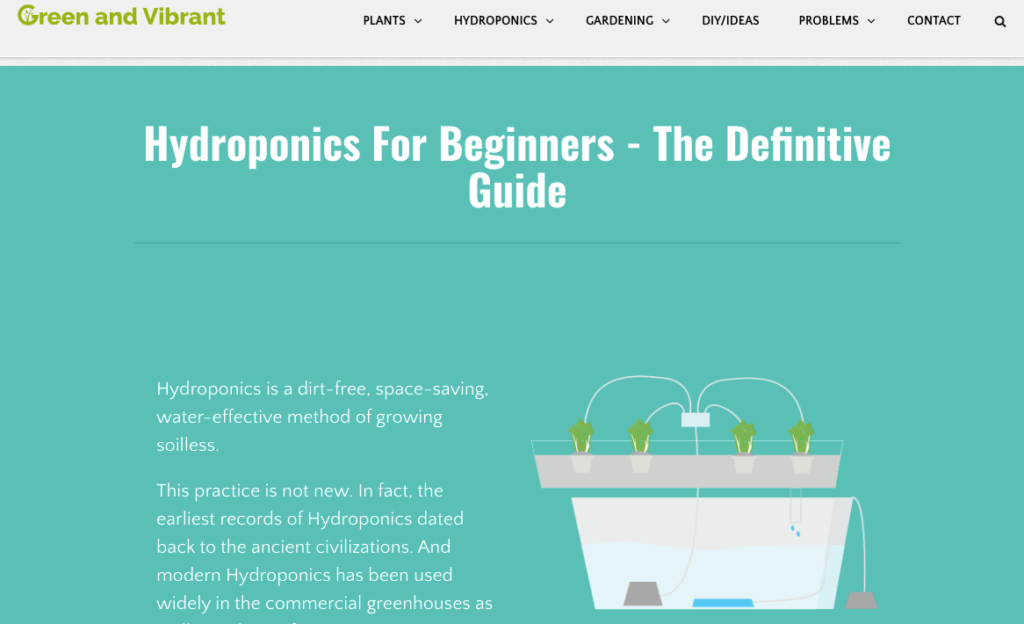
They even have Do It Yourself and complete guides for newly like-minded communities.
Essentially, the level of audience should be considered in crafting your content piece. You want your blog to cater to as many audiences as possible. In most cases, industry starters or early adopters are ones that dominate the majority of the search market.
DIY guides

Complete guides
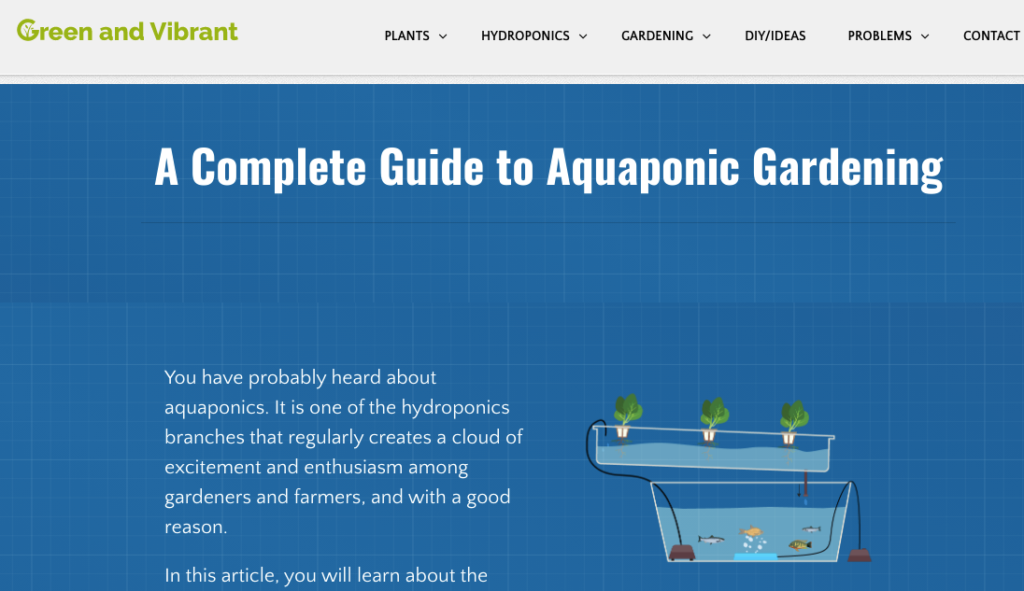
It is a note to consider tapping into topics that people are likely to be interested in. For example, hydrophonic plans and aquaponic gardening may be unfamiliar terms for most people, but valuable topics for those who want to dive into home gardening.
Content Type - "How to Grow and Care Plants"
Gardening is about growing your plants. It involves processes and procedures which your readers would likely want to follow as they pursue their hobby.
You can start creating content about methods in growing, caring, and setting up plants (e.g. how to grow and care air plants).
Methods to grow plants
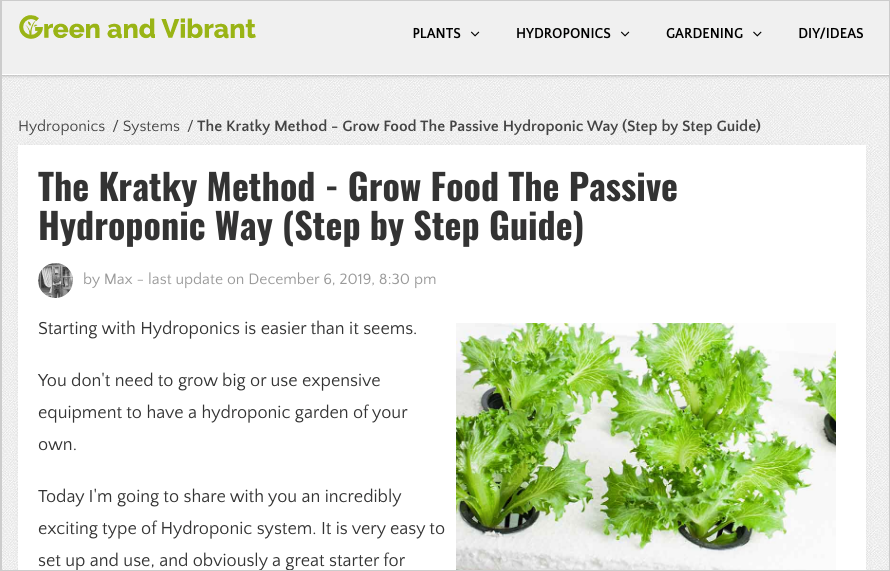
Plants (Daises)
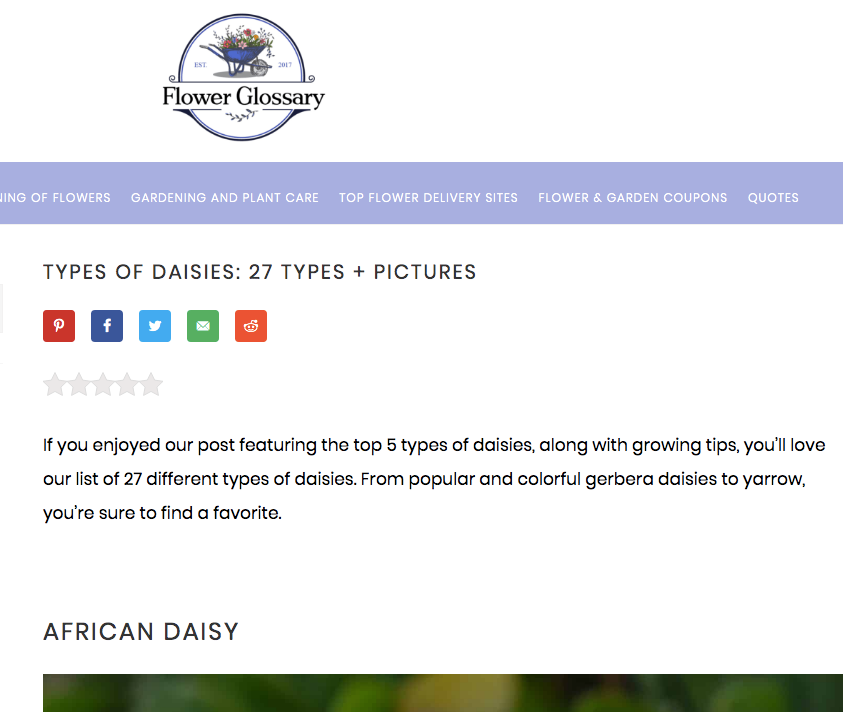
Setting Up Plants
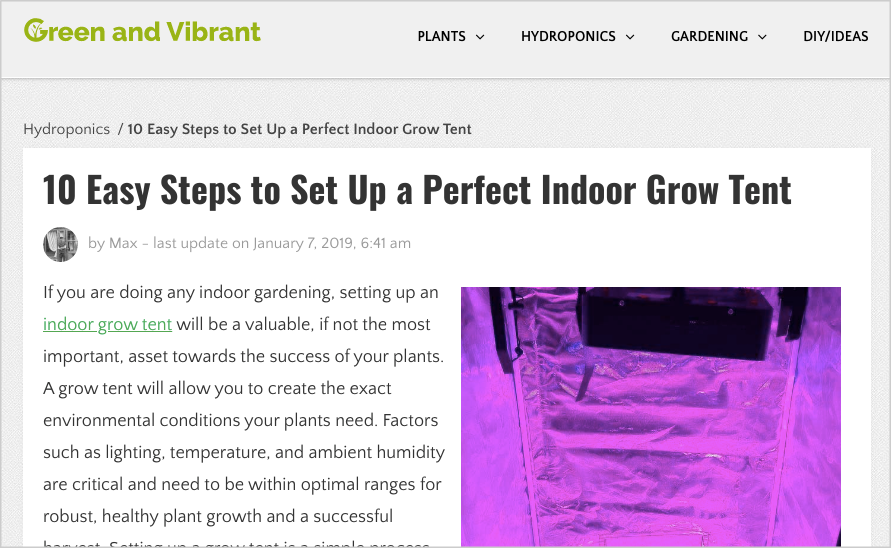
You can go step further by providing information and articles on types of plants and flowers. For example, you can have articles on the types of roses and types of daisies.
Content Depth - "Planting Systems"
Home gardening is a broad industry. That's the reason there are content creators who enter the scene that dive deep into a specific niche.
Consider Home Hydro Systems. It is a non-elegant website with basic design. But what makes it stand out and rank for multiple niche keywords is the idea of topic focus. It only covers everything about home hydro systems.
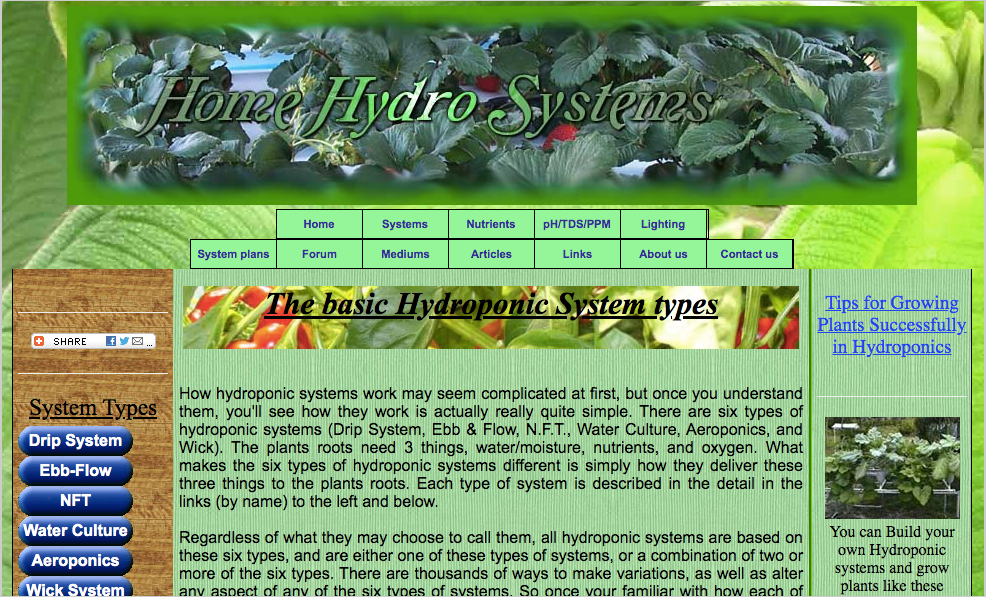
If you haven't started creating your home gardening site, you can think of one particular topic area where you'll massively invest efforts and resources. Look into your expertise and available assets to use for content creation and content promotion.
Content Topic - "At Home" Keywords
Keyword and topic research is essential to any content creation initiatives. Looking into what topics that make pages rank and increase organic traffic to the site helps better structure the content.
During this content ideation process (blog post ideas), you can use the "at home" trick to find any gardening keyphrases. Particularly in this season where most people are staying at home, topics about what to do "at home" are in demand.
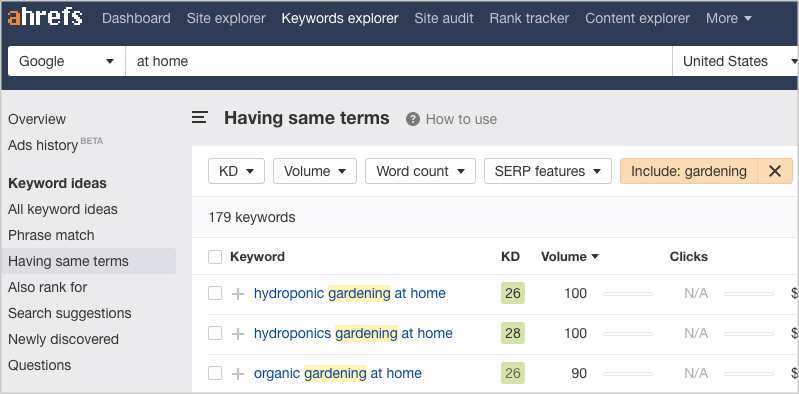
Note: You can use this same strategy for other industries if you're working with clients or have multiple websites - may it be bands and musicians, music eCommerce, plumbing, personal training, moving, car rental companies, hotels, and dentists.
Promotion of "Home Gardening" Content
When promoting your content pieces, it is important to know the best places that will amplify the reach of your web assets.
That includes finding what types of linking pages that have a history of linking to a certain type and format of content in your industry. In home gardening niche, I've found many curators of resource pages actively linking to educational types of web assets. Here are some examples.
DIY Resource Pages
Do you have "do it yourself" guides?
Start finding DIY resource pages you can reach out to for content promotion. Use targeted queries such as inurl:links OR inurl:resources "DIY" to discover those pages.
High school and College Links Pages
Highschool websites have dedicated pages for science-related guides that perfectly fit for home gardening content.
These are quick wins in link building as you don't have to force them to link to your page. All you need to do is to check if the page has a linking history to any similar content assets.
You may simply show your content piece and let the curator decides if it's worth linking from the links page.
Forum Links Opportunities
You can't get away from forum links.
If you can participate in niche relevant discussion threads, you can develop momentum for link acquisition.
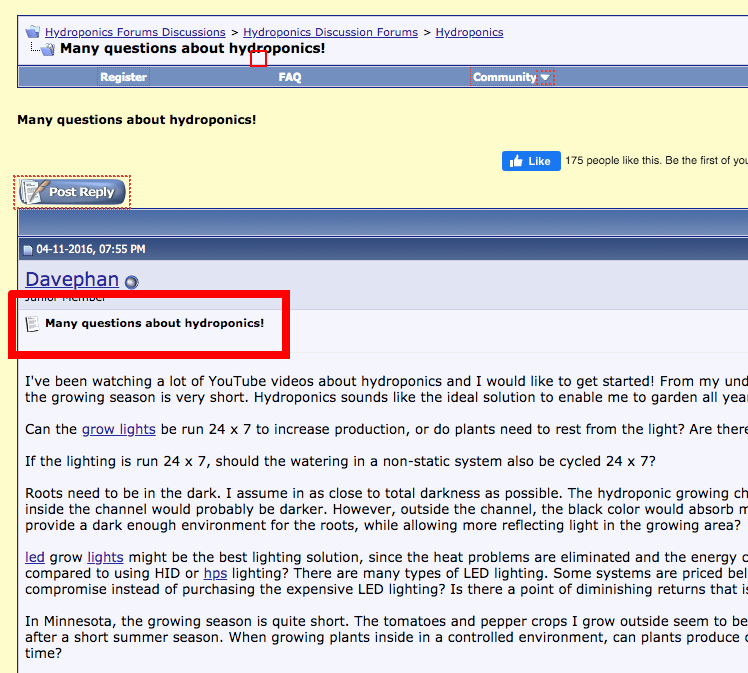
To start with, go through forum threads and participate in discussions where you can contribute your expertise in.
If your existing content assets may be a good addition to your answers as helpful references, add links to appropriate pages. Don't spam forums with your links. Rather, assess if a link to your resource asset is good for sharing.
Take Good Care of Your Home Gardening Website
Deliver content that matches your expertise and to your audiences' needs. Always have a caring mindset of who you are reaching out to — whether you're working in your content creation or content promotion process.
Like growing a plant, your website needs to be taken care of by putting high-value content assets and promoting them massively to appropriate places.
How to Build Relevant and Authority Blog Links
A blog is a place of content.
Creating a blog with brand design, proper architecture, preferred taxonomy, and unique style that differentiates it from its contemporaries — is all there is for setup.
The container needs things in it and this is where your content assets play at most.
Produce your content pieces, and promote them to proper places.
How to Build Blog Links
Here are five ways to build blog links to your website:
- Rank content for “quotes” keywords
- Ego-bait list of top niche websites
- Targeted outreach for tool reviews
- Resource assets for linkable markets
- Create local guide resource links
1. Rank content for "quotes" keywords
Quotes are shareable in nature. It is shared on social networks and can be included in blog posts — which opens opportunities for blog links.
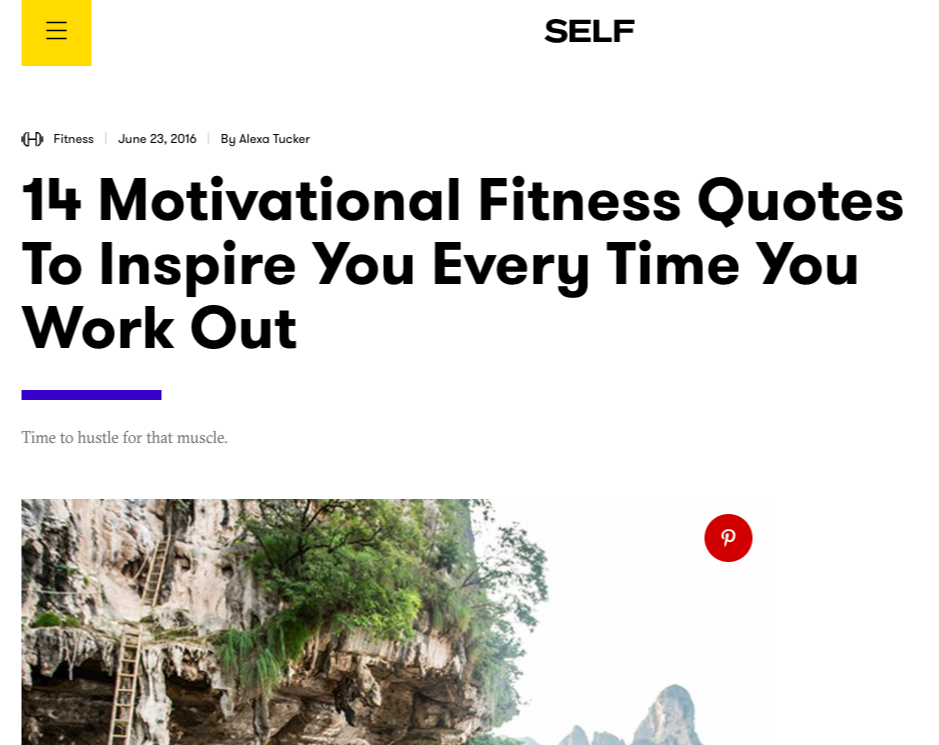
While the opportunities for blog links is higher when the content itself (that lists all quotes) starts to rank for "quote" keywords as it can organically acquire links from content creators as they research for new ideas, the initial sharing on social platforms already has a gross effect on new links.
How to build content and rank for "quotes" keywords
Identify any quotes keyword opportunities in your industry. You can look for Ahrefs with this.

Search specifically about topics close to your brand. List them down in a spreadsheet.
Then, start checking the top pages ranking for your target quotes keyword. Assess any gaps you can fill in — can you make more appealing visuals for quotes?
The shareability of "quotes" content depends on visual design, quality of quotes, and its sources.
Start scheduling posts that include your quotes and/or link to your entire quote content on your own social profiles.
You can increase its visibility by reaching out to bloggers and publishers that have linked to you in the past — they're likely to be receptive to any new content that's worth linking to.
In addition, you can discover any existing posts that need visual content and offer your quotes content as an additional content format to their posts — that would be its value proposition.
2. Ego-bait list of top niche websites
Every publisher wants to get featured on a list worthy of following (e.g. top [niche] websites for 2020).
It's a privilege yet a good opportunity for brands like you to start creating ego bait content that features those niche publishers and practitioners who have their own blogs.
To increase the chances of acquiring blog links, start prospecting, and outreach initiatives before content creation.
How to create ego-bait content and build blog links to it
Discover bloggers you want to feature in your ego bait content.
Collect their contact information and reach out to them with personalized emails. Reach out with the intent of knowing if they want to get featured in your top list content, and subtly ask for a blog link to the list you've created.
Chances are you get yeses from this approach. Who wants not to get featured in a top list of X websites? This link building method has high chances to very specific verticals that only have a handful of bloggers interacting with each other.
Then publish your ego-bait content.
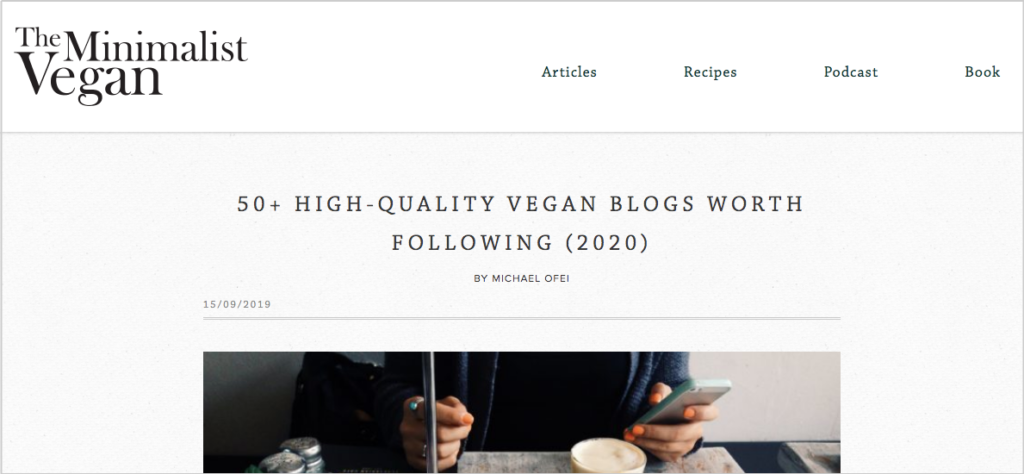
Reach out to people (publishers, bloggers, or any content creators) you've listed in your roundup content.
Let them know about your latest content. You'll primarily get blog links from people you've mentioned and asked for feedback from.
3. Targeted outreach for tool reviews
This next link building technique is applicable to the following people:
- independent bloggers who are not associated with any product and service brands
- brands who can write reviews for their non-competitor brands
- news sites or publishers with blogs fitted for product reviews or a content piece that includes a short or long walkthrough process of using a tool
- non-profit organizations with the freedom to publish tool reviews
I've recently created a quick guide on how to use HARO (Help a Reporter Out). It's simple content that walks you through the benefits of using HARO, how it works, how to use it in simple steps, how to write a HARO pitch, and how to monitor links from HARO pitches.
Basically a good comprehensive guide on using the tool.
Then I simply reach out to any bloggers with existing posts that mentioned HARO in their blog posts, referencing it with screenshots of the tool, or plainly link to it as it is one of the recommended link building tools.

With that, I've sent a quick personalized email sharing the guide. It is a basic linker outreach process most of you are familiar with.
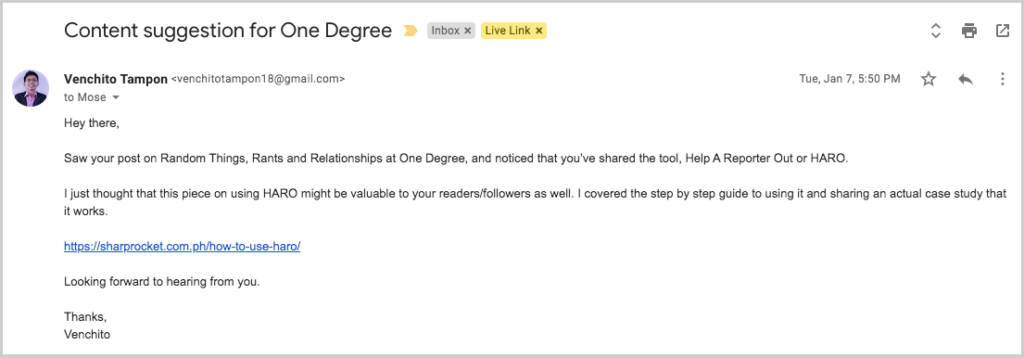
But the value proposition here is that if publishers would want to add more value to their readers because they've mentioned and reference the tool (and don't have the editorial space to expound on it), they'd simply reference a good guide with a blog link.
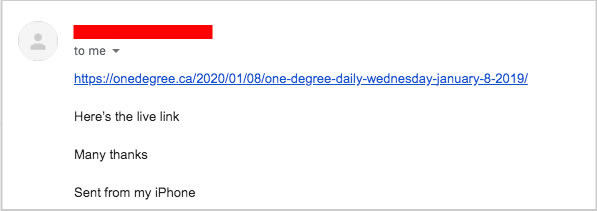
That is where your brand can take advantage of.
How to create product reviews and build blog links to it
Check any tools you can include in your blog posts (at least give a quick step-by-step process in using it) or entirely create a new post about the tool.
Make an entire review of the tool or include a shortlist of steps in using the tool in your prepared content.
When prospecting for possible blog opportunities, ensure that bloggers must have existing articles that mentioned the tool itself. Otherwise, your pitch won't be relevant to them — you lose the opportunity for that reason.
You also want to make sure existing articles should have mentioned the tool descriptively. A good spot even if the blogger emphasized the tool in its blog post (apart from writing a review about it).
This gives you a hint that the blogger used the tool and would be more interested in any relevant further guides.
4. Resource assets for linkable markets
The friction to build blog links for niche blogs is higher, but not resource assets for linkable markets.
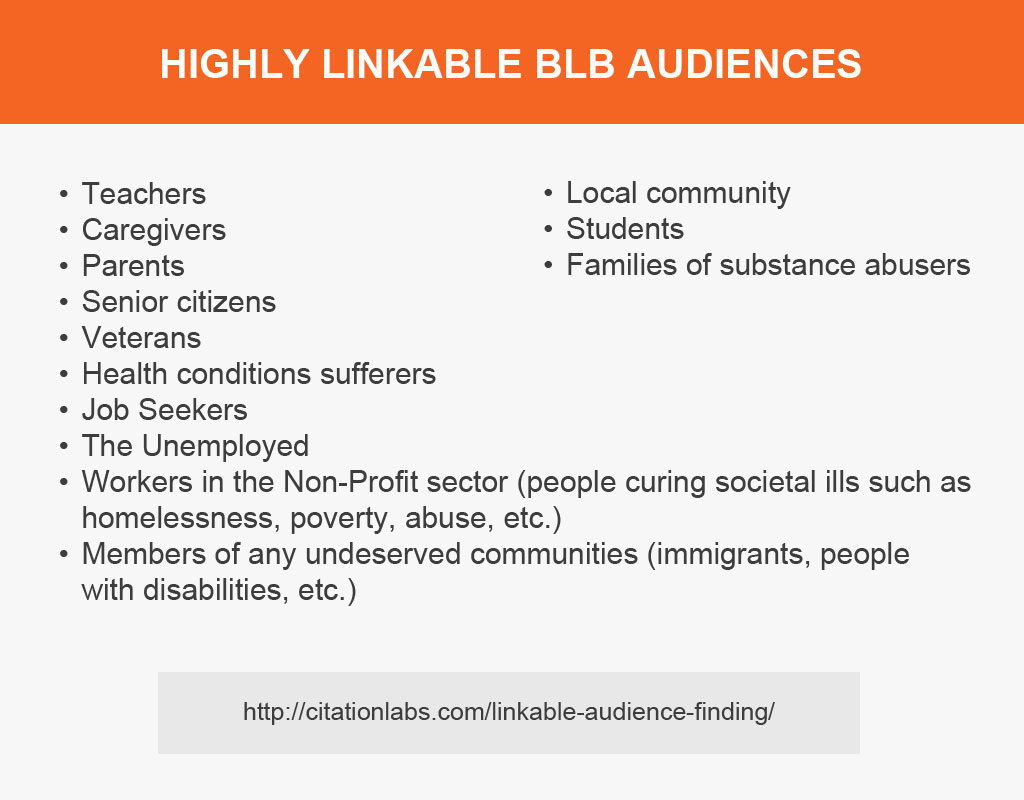
A few reminders when tapping these audiences for your resource guides:
- Ensure that the audience you choose matches your brand's audience — you're likely to get residual benefits, such as converting your readers to consumers if it's an actual fit.
- There isn't any conflict with your potential customers. For example, when you're writing a sleeping guide for veterans, do you have any ideas and products that promote sleep well-being?
How to build resource assets and build links to them
Tap one linkable audience at a time. Produce the most comprehensive targeted resource guide for that market.
Then focus your prospect and outreach efforts to promote the resource guide.
You can use Citation Labs Link Prospector to scale link prospecting.
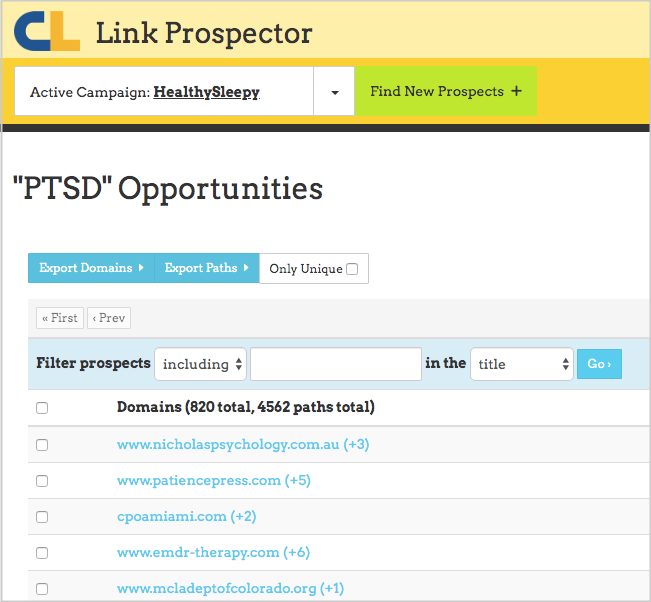
Once you've collected the backlink targets, it's time to get the best ones.
Here is a tool from Granit Doshlaku that can help you qualify sites that are relevant and have good authority for your resource guide.
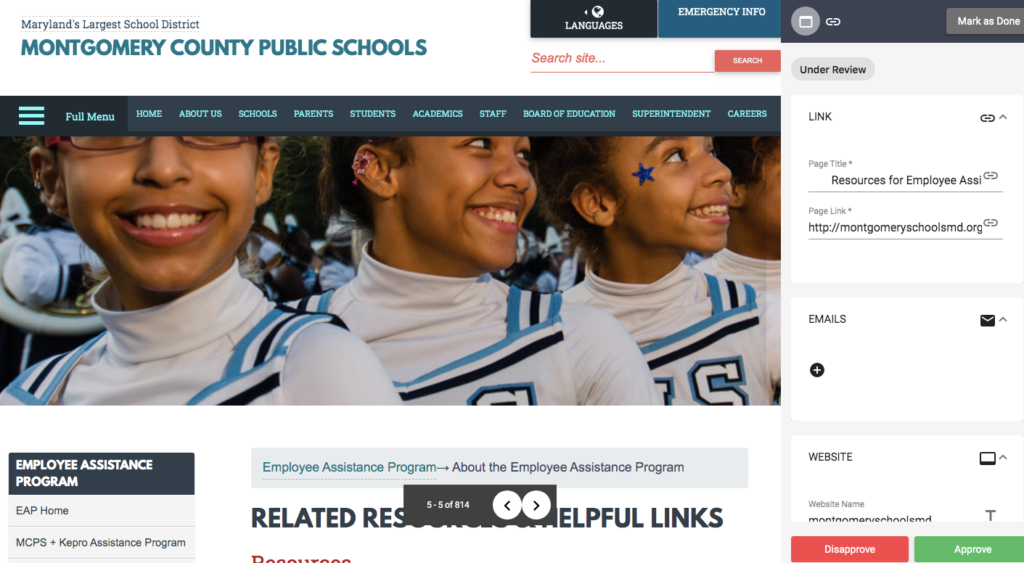
The tool is free and allows you to check resource pages of different websites on the same tab.
You can even include notes on each qualified page.
Later on, you can export the list of qualified blogs.
Once you've got qualified blog prospects, reach out to them and simply share your resource guide.
You don't have to push linkable markets to link to you. If your content asset is worth linking to, you can expect a blog editorial backlink to your page.
5. Create local guide resource links
The earlier link building technique is for linkable markets that have the capacity and willingness to provide blog links to your site.
This time, it's for any local niche blogs and resource curators that are topically interested in your content.

If you're a local brand, you can search for any topics that are listed in the form.
Start developing those lists' content and build links to them through manual outreach.
On editorial links
Editorial links are the type of links we, as a link building company focus on building for our clients of different industries. And we've been seeing results all over the place.
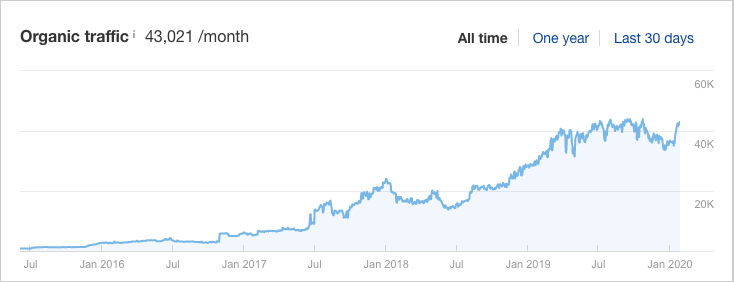

What makes editorial links the most powerful type of links, in my opinion, is they cause other effects beneficial for the site's entire branding:
- Drives qualified traffic through descriptive link texts on linking pages
- Established relationships with publishers and industry experts through guest blog invites
- Gives new opportunities for upcoming bloggers with the potential to make their own names in the industry
- Helps the strategy team (or any who conducts planning or strategy for link development) to assess the required estimated number of links for a specific page based on new links' current impact on the page performance (comparatively looking at its other competitor's similar content performance).
- Adds more contextual relevance to the linking page based on determining phrases surrounding editorial links
Whether editorial links are acquired through social sharing from people who initially shared your content, or through a reciprocal method in a form of a free tool, badge, or any other incentives. Send your incentive with a sweet spot personalized email.
Strive to get as much of that type of link with the highest quality in mind.
On relevance and authority
When pursuing editorial links, it's important to seek the highest quality.
But what does quality mean in links?
Quality means relevance and authority.
Relevance is two things: domain relevance and URL relevance.
Most of your efforts should be placed in the highest URL relevance and highest authority of links (HADR). That means getting a link from a snoring article to your article about snoring.
With these things in mind, here are some scalable link acquisition tactics to build blog links to your site.
Remember that any of the techniques below would require existing content or a new content asset to be published on your blog.
Key Takeaways
Indeed, there are many innovative ways to build quality blog links.
The aforementioned tactics above have been tested on our own sites and for our clients. If you wish to have a dedicated link building campaign for your site and/or for your clients' websites, you can check out our link building services and we'll help you out in any valuable way.
What is Micro Content and How to Use It to Build Links
What is micro content?
As defined by user experience expert Jakob Nielsen, "micro content" is a small group of words which can be skimmed by the reader to understand the wider message of the article.”
Using it perfectly to fill in your editorial content calendar will help you solve your content shortage.
That's not to say that micro-content is just for quantity alone, but you can also make their quality better with a good strategy and execution.
Why Micro Content Works Today?
Here are some reasons why brands take micro-content pieces into consideration — which speaks also for its advantages over other forms of content.
Easy to consume
A micro-content piece has the ability to show a clear message or point in just a few seconds.
Whether it is a 30-second or minute video or a short story comic, it has the advantage of drawing the attention of customers to get to know about the brand.
Instead of bombarding potential customers with long-form guides, which not all people can consume well, why not produce easy-to-consume content that gives people easy to digest information — one at a time?
Develops creativity for content creators
Given that you have to think of ways on how to turn large pieces of content into micro web assets, you develop your creativity over time.
You discover methodologies to scale content creation as fast and as better quality as you can.
Produce in small budgets
Nowadays, the barrier to entry in content marketing is low.
You can start creating micro content pieces with a small budget. By putting a few bucks into creating visuals, writing short-form texts, and publishing them on your blog, plus distributing all of these assets on social media, everything can be started as soon as you want it.
Highly distributable
Content marketers start with creation, but it doesn't stop there. Content like micro assets has to be distributed well to places where consumers engage in.
How to Use Micro Content to Build Links
Link building requires content to effectively share value proposition to prospect linkers. Without it, it won't be easy to find people giving you backlinks without any value provided by your brand.
Micro content gives opportunities for small to medium-sized business owners to scale link building. Even big brands can do it to build momentum with their content promotion, as they can easily develop hundreds of assets ready to be distributed in many targeted web places.
On leveraging repurposed pillar content
I've shared this methodology popularized by Gary Vaynerchuk in my guide about content marketing strategies for small businesses.
It is a simple methodology of efficiently producing micro content pieces.
Start with a document pillar content, repurpose it into micro assets, and distribute them across social media. Here is a flow image of how it looks like.
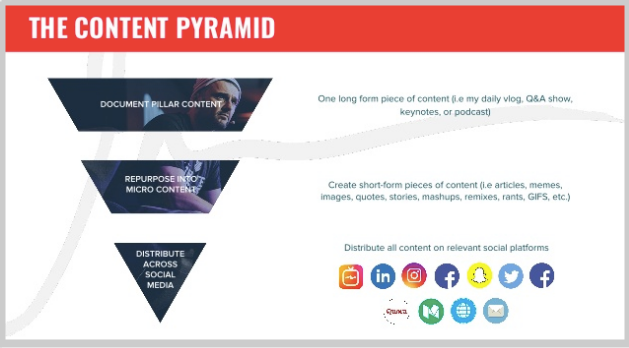
The original purpose of the model is for social branding, but we can replicate this exact model to build authority organic backlinks to our websites.
1. Turn sales-driven assets into distributable micro content
Every company has sales teams. Depending on its architecture, type, and processes, they use a document assembly that allows them to get a good flow of sales process, deliver things to prospective clients or customers, and/or satisfy them with enough inputs for buy-ins to offerings.
These documents include the following:
- Request for Information or Proposal (RFI / RFP)
- Statement of Work (SOW), Contracts and Invoices
- Customer Project Plans
- Sourcing channel partners with relevant vendor inputs partners need for each of their document categories above
If your brand can request any of these assets to be publicly distributed for brand building and content marketing purposes, you now have an opportunity to massively produce micro content.
How to build links to sales-driven micro content:
- Appeal your micro content to salespeople who are likely to share your content on blog posts or social channels. For example, financial advisors, if touched well by finance brands, can bring a good amount of mentions on industry blogs these FAs belong to.
- Spend a couple of bucks for social advertising to get initial eyeballs distribution for micro content.
- Target the most vocal people in your industry for social sharing. More social proof of micro content increases its connectivity factor to people likely to give links to your site.
2. Recover published assets
After content launch, it's easy to forget high-quality assets that have performed well in terms of links and social shares but were not revisited and updated to gain even more results.
Start going through some of your best assets. You can use Ahrefs to find high-performing linkable assets (Top Linking Assets).
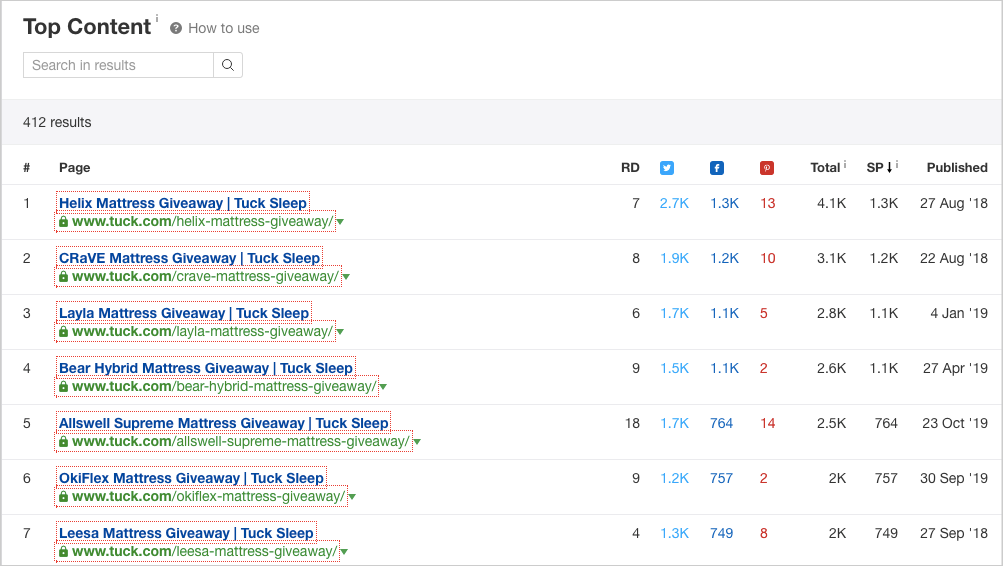
Assess which ones can be cut into pieces of short-form texts, or small visuals, or even turn content type into another content type (e.g. texts into visuals).
Here are some published assets you can recover, update, and/or turn into valuable micro content pieces:
- Frequently-asked questions
- Full webinar recordings
- Video recordings of presentations, speaking engagements, and any form of public appearances (e.g. media interviews)
- Long-form informational content (definitive guides on your subject matters)
How to build links to recovered published assets:
- When turning huge assets into micro pieces, assess if those micro content can stand alone its message. Otherwise, it won't be perceived as much as valuable as compared to being tied into a large one.
- Find similar bloggers, publishers, and content creators who have linked to your big assets in the past. Reach out to them and share your content.
3. Reclaim branded short-form texts
Branded short-form texts are the content of your site you've originally started or cited. These can be your own coined terms or your own definitions of terms.
In the likelihood that those branded short forms were distributed, there were publishers who included your piece but didn't credit your site as the source.
To find these people, you can use Google search and search for your exact definition of the term or whatever short-form text you have (e.g. a descriptive technical survey points).
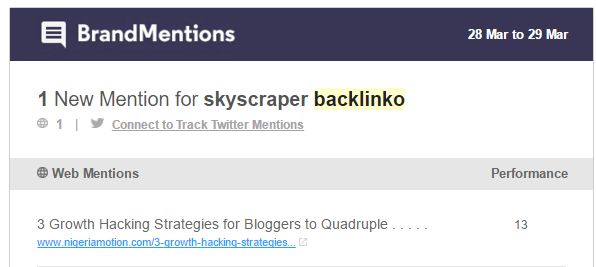
If it's a coined term you've popularized, you can use BrandMentions or Ahrefs Alerts to track any mentions of a particular word or phrase.
How to reclaim links from branded short-form texts:
- Monitor regularly publishers who included your short-form texts in their own content. Build relationships by sharing their content on your own social profiles.
- Reach out to those publishers for brand link reclamation — don't force them to link to you (as some are in the habit of doing so). Simply ask to credit you as the source.
4. Invest in comics
One of the interesting content trends today is scaling comic creation.
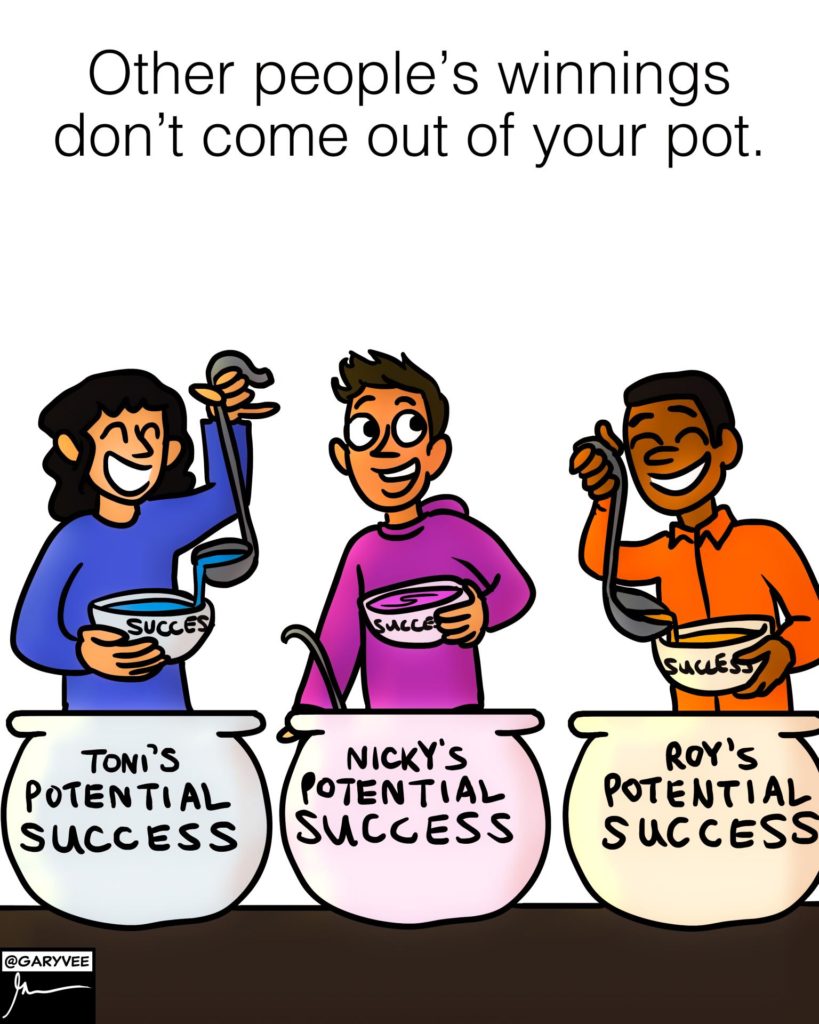
You see most of this micro content type on LinkedIn. Gary Vaynerchuk, for example, massively produced comic series that tell about his messages across his audience.
You'll see comics as shareable content all over social media places because it quickly conveys stories of people, ideas, and concepts.
Apply that to your own industry and be the first one to produce short-style comics.
How to build links to comics:
- Work with influencers in your industry who have a substantial social following — so you can expect a faster distribution of your comics once it is published.
- Reach out to independent bloggers that allow a variety of content formats in their blog posts. Offer the content of your comic as a way to add value to their current readers — a new style of learning consumption.
5. Rank for "memes" keywords
Memes are another great easy-to-produce micro content.
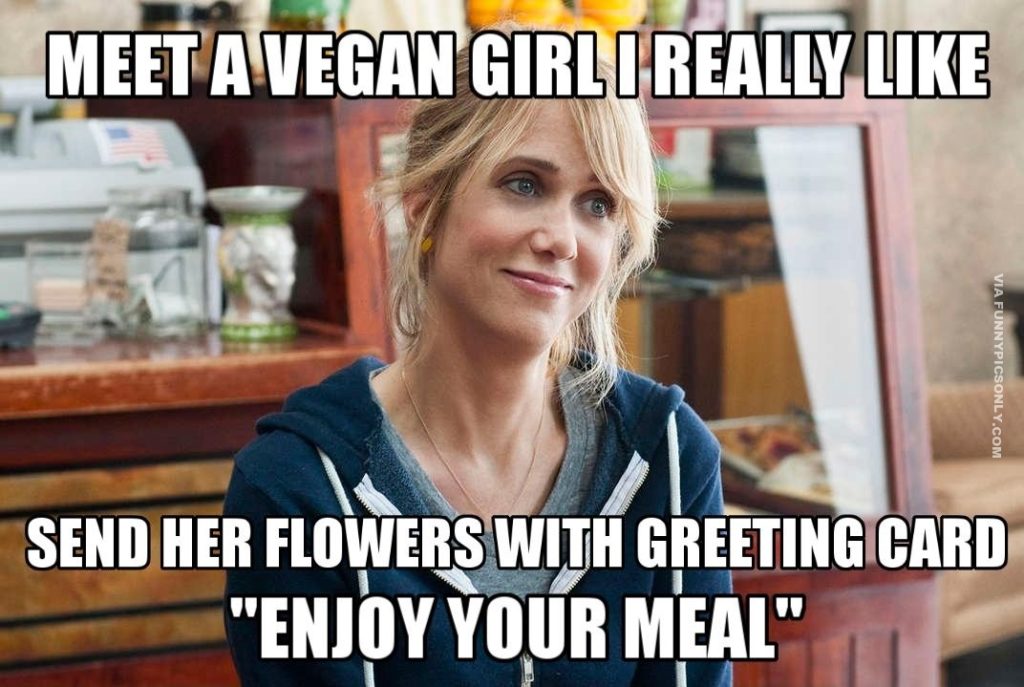
There are many ways to start with this one — either to do it yourself using meme generator tools or hire or get your graphic design to produce sets of memes for your brand.
You can start with popular Facebook memes that have been rolling around contextually about your niche. Then go beyond that once you have some visibility with your published memes.
How to build links to memes:
- Get visibility on social platforms to make it go viral or have some social users with a good following to start sharing your memes.
- Rank for meme keywords (e.g. finance memes) by creating a page on your website dedicated to niche memes.
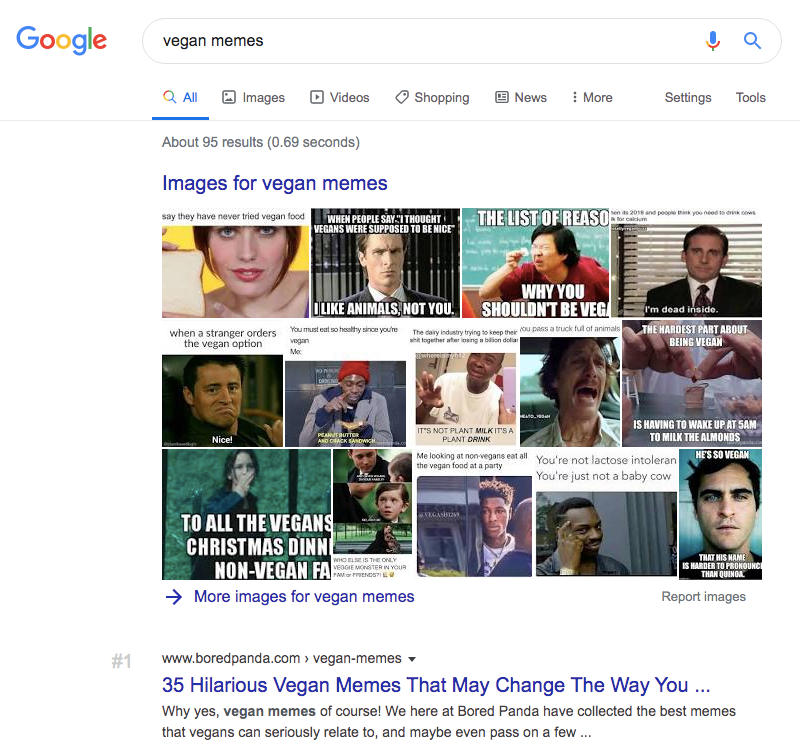
There are other types of micro content you can test for yourself and produce a series of it this year. Here are a few more examples:
- Custom illustrations or photos that convey some sort of quick tip or fun fact
- GIFs
- Shareable one-liners
- Interesting statistic
- Videos
Be creative with micro content
Establish credibility through the production of different micro content mentioned above. Start sharing them on your own distribution channels and gain new organic backlinks month over month.
If you're looking for link building services, partner with us and start your campaign today.
How to Use Quora For Marketing
If you are marketing a product or service, educating your audience is the best way to sell.
One of the best ways to elevate your authority online is to answer questions your target people care about. By helping them solve problems, gain new insights and ideas, and learn to do a thing, gives you the leverage to gain their trust — leading to more followers for your personal brand.
How to Use Quora For Marketing
Here are four ways you can use Quora for marketing:
- Prioritize most visible questions
- Re-answer questions you’ve answered in your blog
- Invest in adding higher value with your answers
- Include other content formats in your answers
- Discover new headline topics from questions
Prioritize most visible questions
Like any other content marketing strategy, you want to start by looking at the highest yield of your resources once you allocate them to an initiative.
In Quora marketing, this means you identify questions that have the highest visibility. You want to get the most out of your efforts by ensuring the questions you've answered are ones receiving the highest views from people.
One way to do that is to reverse engineer questions that are currently ranking in search results. You can use Ahrefs to find ranking pages in Quora. Filter pages based on your topics of choice. Now, you have questions that are likely to receive continuous traffic.
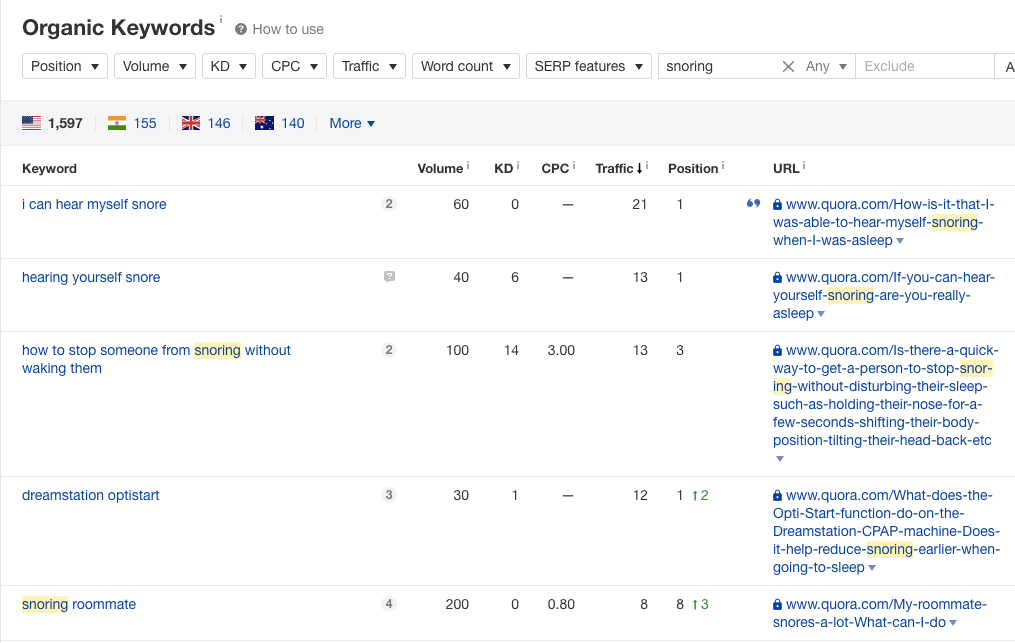
Another technique to discover the most visible questions in Quora is to check the "Most Viewed Writers" on topics you're interested in.
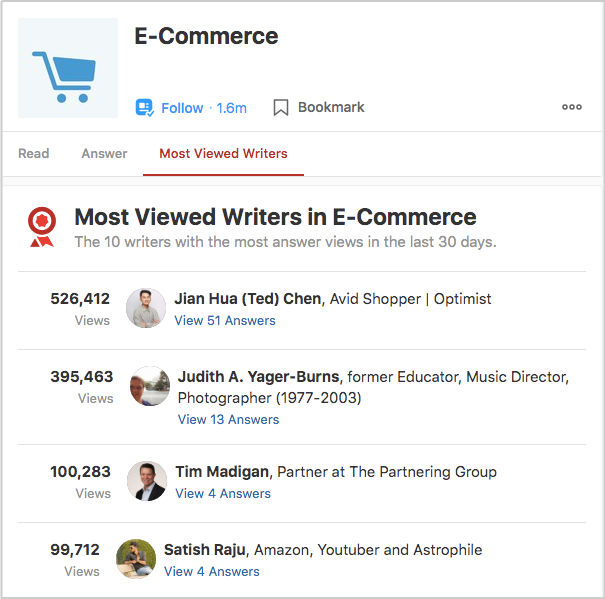
Simply choose the topics of your choice. Then view the "Most Viewed Writers" for those topics. Check the top profiles in the section. On their profiles, you'll see a bunch of questions they've answered.
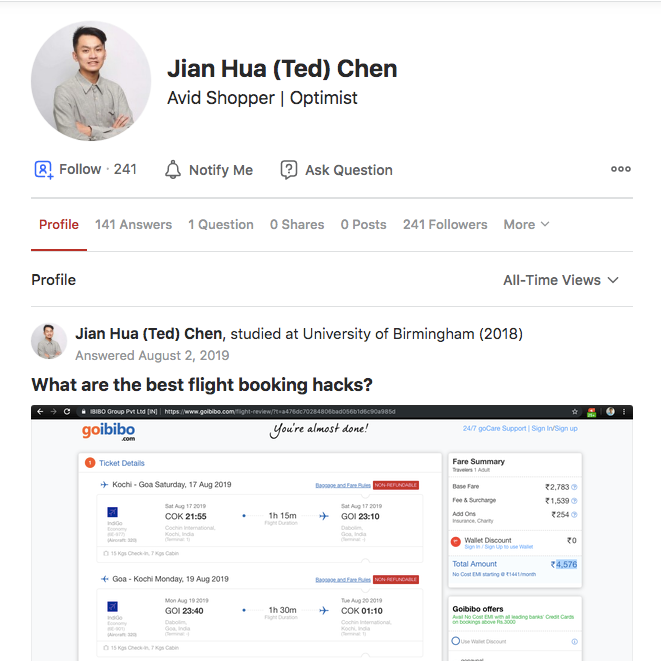
Add those questions to your list. Then later, decide if they're worth giving attention to answers.
Re-answer questions you've answered in your blog
Content distribution is a must after you've published your content piece. Many content creators start hitting the publish button without any plans to promote their web assets. They celebrate but don't take the time to let their audience know about their piece.
Start looking for evergreen content assets on your blog - ones you've published before but remain relevant to your audience.
Match it to Quora questions by searching for any relevant questions you can answer using your inputs from your content asset. This will take some time to dissect your page to see any connected insights to questions you see in Quora.
Invest in adding higher value with your answers
If you are targeting the most visible questions, you're likely to end up seeing multiple answers for each of them. Quora content creators produce different answers — a few of which are value-adding to the target readers.
Now, this is the time where you think of ways to add more value to the question itself. Here are some tips to help you craft a better answer:
- Read other answers to the question. Look at how other Quora writers deliver their insights. Ask yourself, are they missing some important inputs here? Do they directly answer the question?
- Share experiences, case studies, and stories to prove your points — not just to make your answer look appealing. The goal is to provide value. This means you check how your experience can help the person solve a need (an answer to a question).
- Don't sell your product or service, if it's not connected to your answer. Make up your mind that you solve the answer with the best insights you've got not with spam links to your money pages.
Include other content formats in your answers
Relevant content marketing is putting enough effort into making your content consumed by the majority of your target readers.
In Quora marketing, you include other content formats to your answers for other learning styles (besides reading).
You may add videos and images (i.e. infographics and illustrations) to your inputs. One tip is that if you know your answers might be quite long, insert images or videos in between paragraphs to get readers engaged.
Discover new headline topics from questions
If you are looking for content strategies for organic growth, you can try getting inspiration from Quora questions.
One beautiful way to make your content cut through the noise of so many other topics is to know which headline topic would you choose.
Part of that is discovering the top questions in Quora related to the subject you're writing about. Tweak your headline based on what most people are querying in.
Here are some useful guides on using community topics for copywriting your content's headlines:
Benefits of Using Quora For Marketing
Brand Exposure
Quora gives you the opportunity to expose your brand to audiences you never had a chance to interact with. That is a good chance to add more people to your customer base.
Brand recall happens when your brand is exposed continuously to the right audience. As they always see your brand bringing value through expertly-crafted content, it brings the impression of what your brand is about and what it purposefully delivers to its audience.
Quora's exceptional reach is without a doubt. Either you want to try to tap a new audience with topics still aligned to your brand,
Thought Leadership
It takes a while to build thought leadership online. People have to know who you are and what makes you different from other similar personalities.
However, content distribution through Quora helps you get started with thought leadership. Over time, people will naturally come to you for media and blog interviews, advice for their brand activities, and company partnerships.
Audience Insights
You can't market effectively to your audience without knowing their changing behaviors. That includes what topics and trends they're looking at, their current situations through questions they ask, and what forms of content they mostly consume.
Link Acquisition
Constantly getting links to your website isn't easy. It requires the discovery of new ways to provide value to a potential linker with hopes of links.
Quora helps you do link building to your website from answers to the audience's questions. Make sure that your linking page serves as a reference for more information to your answered query. It should be relevant and must be of use to readers with more insights about the topic.
Referral Traffic
Given that will be an insertion of blog links to your content, you're likely to receive traffic from Quora. That's the reason why it's important to place links properly where it is normally seen for more references.
Search Visibility
Quora has an increasing demand for searches as it ranks for several keywords in many industries. Given its engagement and low search competition for questions (keyphrases that have search volume), pages of Quora get most of the search visibility.
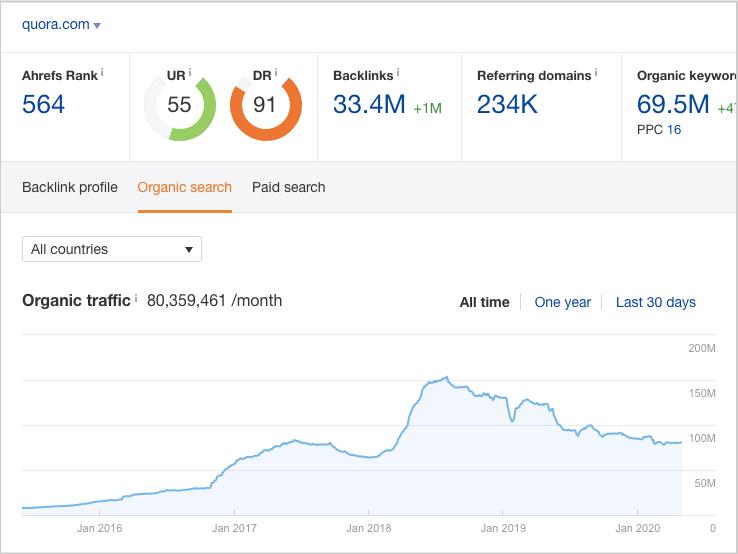
In cases when questions you've answered rank for niche phrases on search results, you get the benefit of more exposure for your answers.
On Maximizing Community Websites
With an abundance of time, marketers must be willing to put more hours into bringing value to their audience. That includes providing solutions to problems, and thought-provoking answers to questions.
Quora is a good community place to start engaging your audience, provide answers to product-related questions, and establish thought leadership in your space.
More Than The Common Factors In Link Diversity
When people discuss link diversity, they basically refer to a methodology of getting links from various kinds of pages of different websites.
Such link diversity includes a ratio of homepage links to deep page links, a mix of do-follow links and no-follow links, anchor text variation, links on different page locations (link placement), links from websites with different Domain Authority (DA), and links from websites with different TLDs.
These common factors of link diversity are critically important, but a newbie SEO professional wouldn't have much time to check each one of these factors while they are executing every facet of a link building campaign.
It's hard to diversify if you're into the execution stage. The best that I recommend is to go all-in with the strategy - i.e. understanding what kind of pages need to acquire so you can concentrate your efforts on work alone when it's execution time.
How to Diversify Your Link Profile
Here are four useful tips to help diversity your link profile in the strategy phase:
- Employ different methods.
- Have different link building groups working on different tactics
- Tap different linkable audiences
- Leverage latest and recent link opportunities
1. Employ different methods
Every link building tactic is normally targeted to a specific type of page--for example, broken link building for links pages, scholarship link building for scholarship pages, and blogger outreach for guest blogs/articles.
By applying different link acquisition methods, you are able to target different types of links from different pages — allowing you to diversify your link profile.
Of course, each link building tactic will require more than one person to execute all phases of the campaign. If you want better results, your link prospectors and outreach specialists should be well-trained to execute their tasks.
This idea may be turned down by solo link building consultants given that they don't have a huge team to facilitate all of these methods. While that's true in a sense, they could still employ these methods one at a time.
For instance, it's possible to conduct a blogger outreach for one solid content piece for two months, and then work on a scholarship campaign when all you're doing is waiting for links to live in your blogger outreach campaign. You can then switch your resources to another link building method
If you discovered one type of link that demands huge opportunities in your space (i.e. summer housing pages on .edu sites).

By doing so, you're not limiting yourself to one or two types of links; you vary your link type through a variety of methods.
2. Have different link building groups working on different tactics
This is an effective strategy that I've found to be true to a few of the clients we're working with. We are not the only outsourced link building provider, they got another one or two link building agencies or teams working with them.
Not only are we working for different pages (dedicated pages to build links to), we also employ link building tactics.
That allows them to diversify the types of links they're getting on a month-to-month basis.
So if you've got a huge budget on your plate, you may assign different pages and work towards different tactics with the help of your outsourced teams.
3. Tap different linkable audiences
In a white-hat style link asking approach, where we prospect for resource pages, the basic idea to scale things up is to tap different linkable audiences for each content you create.
So let's say, you will create a piece about bullying, another piece for kids and teenagers, and there may be content assets dedicated to veterans and PSTD sufferers.

These are linkable audiences you can target for each of your content assets. So it's not just a variety of methods you're applying, you're also targeting resource links from different topically relevant pages.
4. Leverage latest and recent link opportunities
When SEOs talk about link diversity, they focus more on anchor text variation and other common factors I mentioned earlier. While these are all part of our topic today, link diversity is also about finding and pursuing recent or latest and credible link opportunities.
If you can build real links that translate to real business value like getting coverage for a story on a top industry news outlet, it'll be worth your time receiving additional business exposure and assisted conversions.
Start with the recent links of your competitors. Plug in your competitors' domains in a link analysis tool like Ahrefs. See their recent links for the past few months and identify what they've produced or covered on their blog to assess if these are replicable or could be turned into a unique angle of yours.
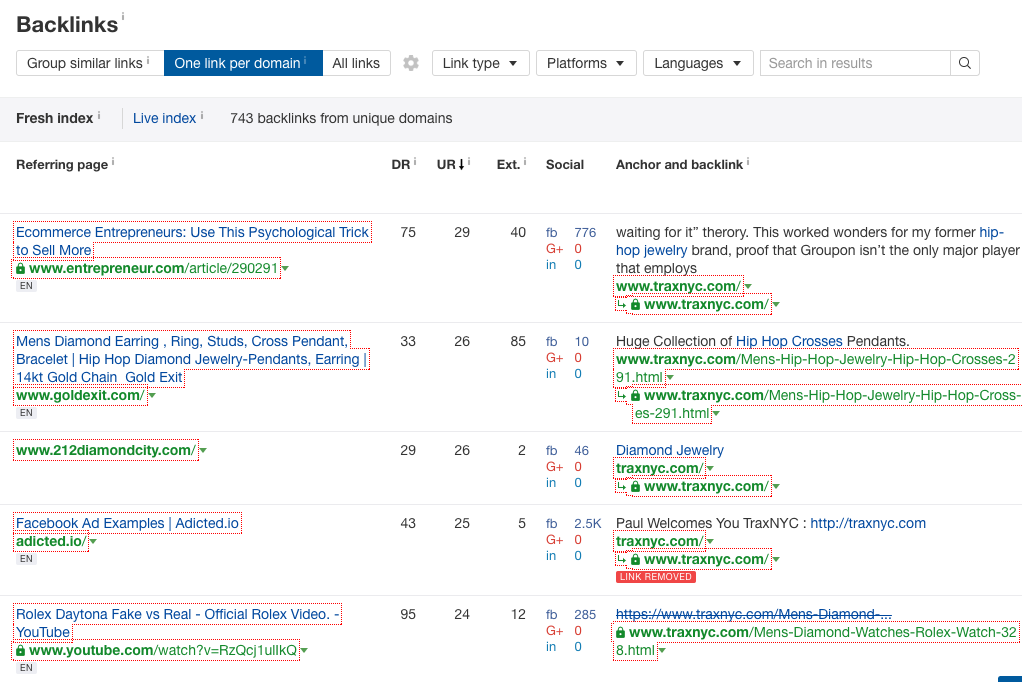
By getting a more systematized approach in pursuing authoritative links, you're likely to diversify your link profile — with both organic and manually-built backlinks.
You can check out this anchor text optimization guide by OutreachMama.
BUILDING LINKS THE NATURAL WAY
When a natural backlink profile is forcefully done and isn't done really naturally, there's a chance that what has been aimed won't be achieved — a natural backlink profile indeed.
Employing a variety of white-hat link building techniques, customizing campaigns to suit different linkable audiences, pursuing a variety of links to different web pages, and pursuing credible links at your own best are ways to really diverse your backlinks.

